One
A SLEEPY COUNTY SEAT ANTEBELLUM HAGERSTOWN
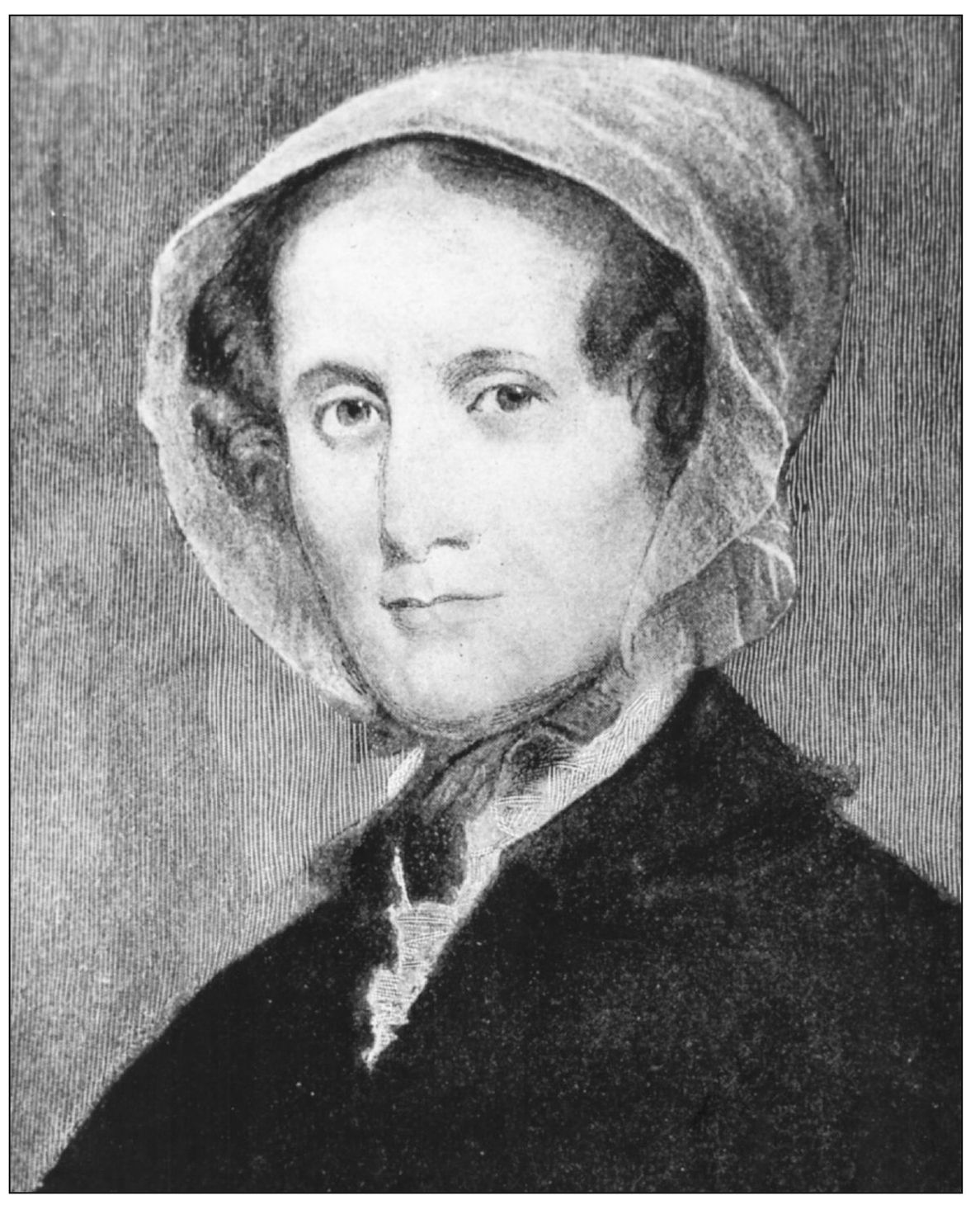
Lucretia Hart was born in Hagerstown in 1781 and moved with her family to Lexington, Kentucky, at age 3. In 1799, she married a young man with much promise. His name was Henry Clay. Clay was a contender for the presidency in three unsuccessful attempts. Had he succeeded, Hagerstown could have boasted of being the home of a first lady. Nonetheless as a senator and secretary of state, Clay, known as “the Great Compromiser,” would become a major figure in forging the political environment that led to Civil War.
(WMR-WCFL.)
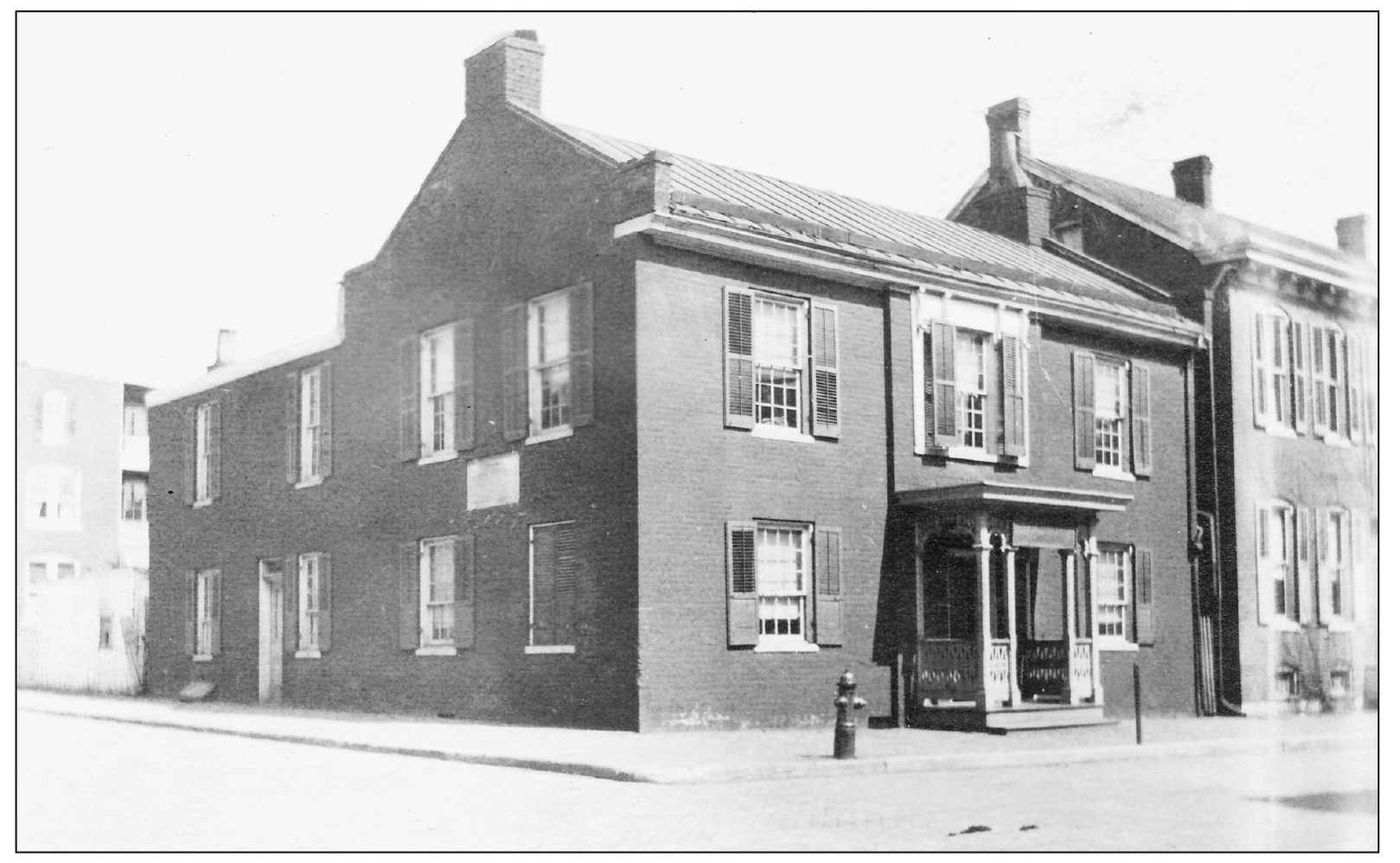
The Hagerstown Charity School was founded in 1815 by the Hagerstown Female Society with the mission of educating the underprivileged children of mothers who had to work due to the loss of their husbands. The Charity School building, which dates to about 1840, is located at the corner of Locust and East Washington Streets. Founded in 1906, the Hagerstown Day Nursery has occupied the site for over a century. (WCHS.)
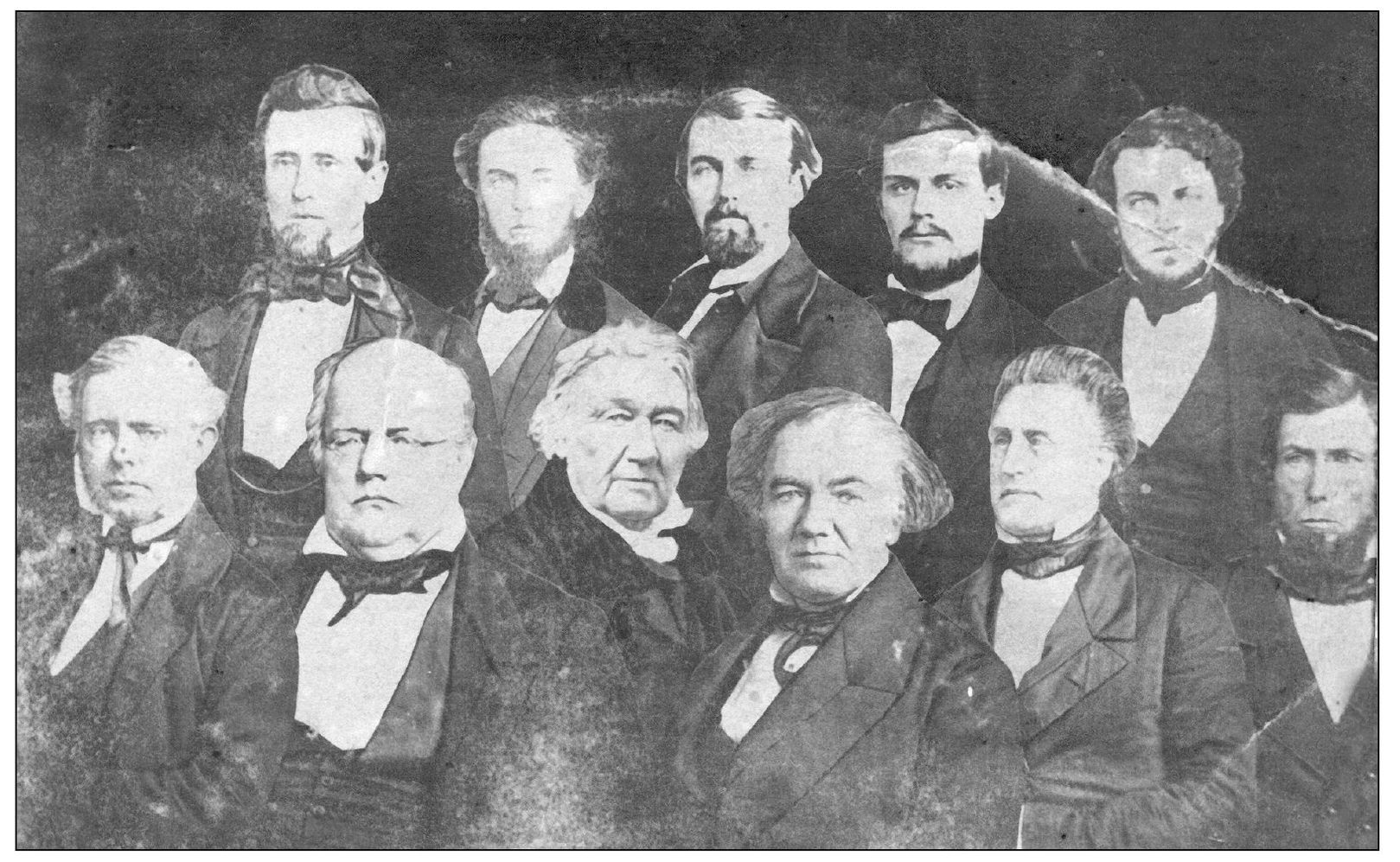
This historic collage depicts the prominent doctors of Washington County during the Civil War period. They are, from left to right, James B. McKee, Ezra Wise, Dr. Duckett, Charles McKee, Frederick Dorsey Sr., Frederick Dorsey Jr., Claggett Dorsey, Charles G. W. MacGill, Charles MacGill, Samuel Lungren, and Norman Bruce Scott. The MacGills served the Confederacy. (WCHS.)
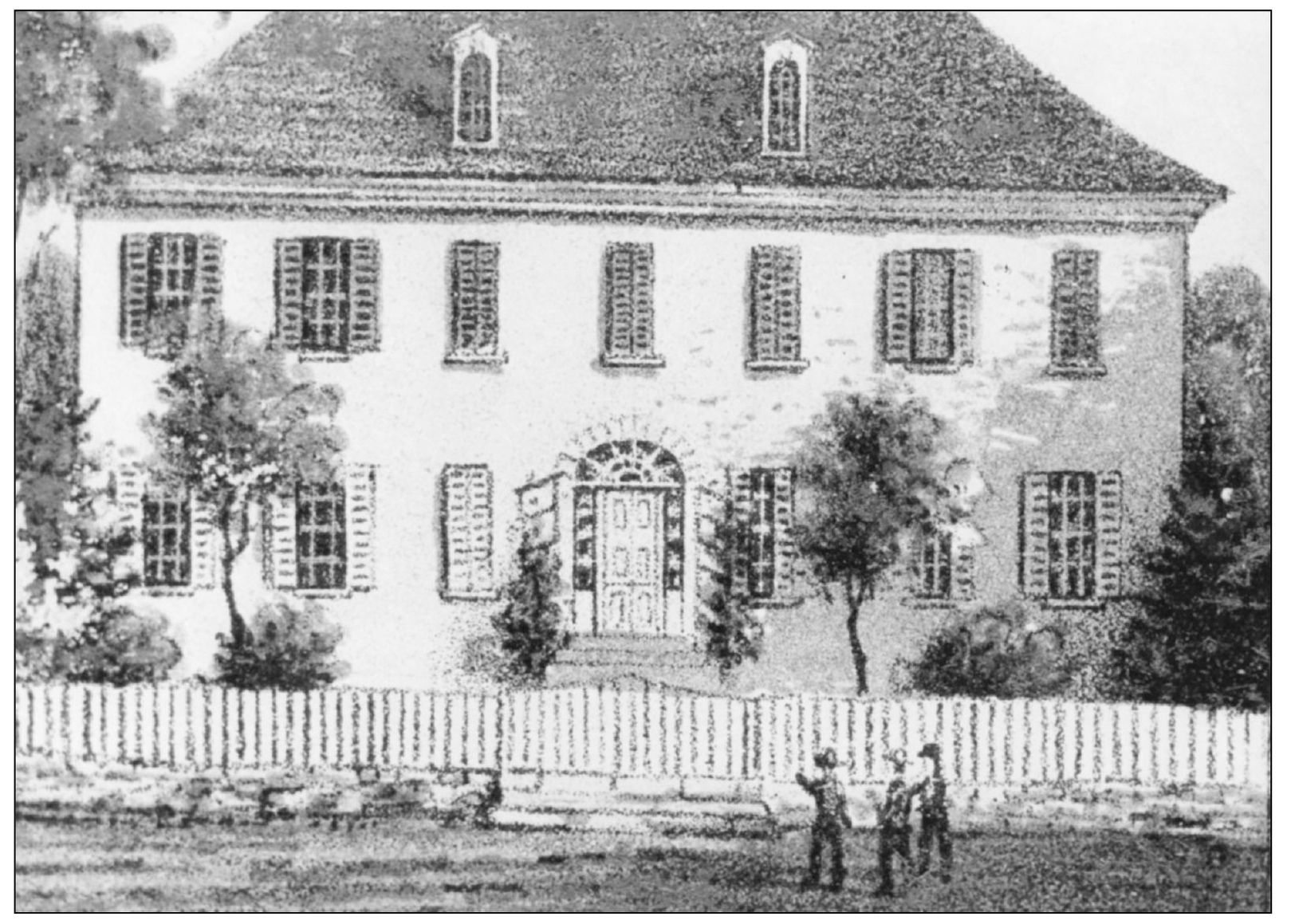
The Hagerstown Academy was established in 1810 and was located in the middle of what is now the 100 block of South Prospect Street. Used as a military hospital at times during the Civil War, the school was the alma mater of most of Hagerstown’s prominent native sons. The building was demolished to extend South Prospect Street to Heyser’s Woods (today’s City Park). (City of Hagerstown.)
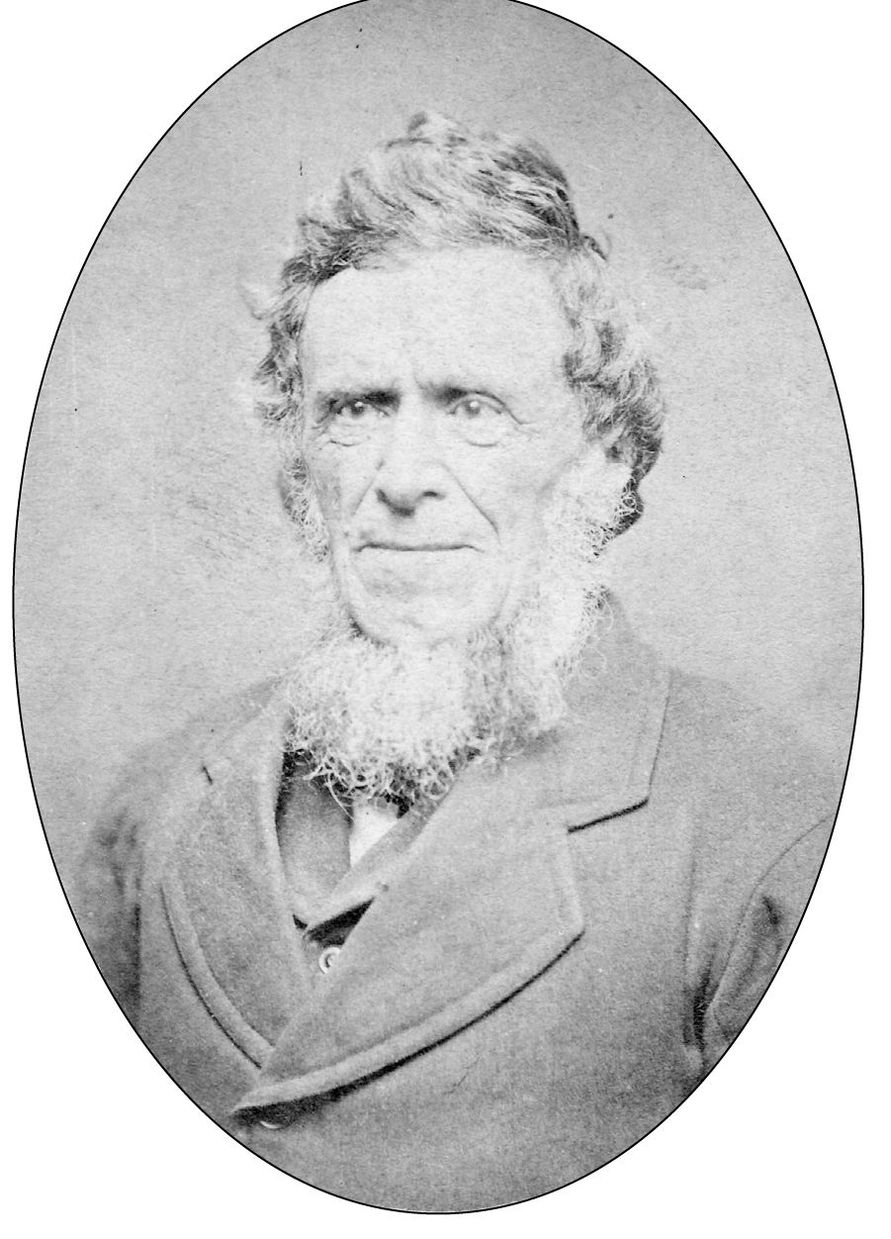
Prof. George Pearson taught at the Hagerstown Academy. The exact dates of his service on the faculty are not known. (WCHS.)
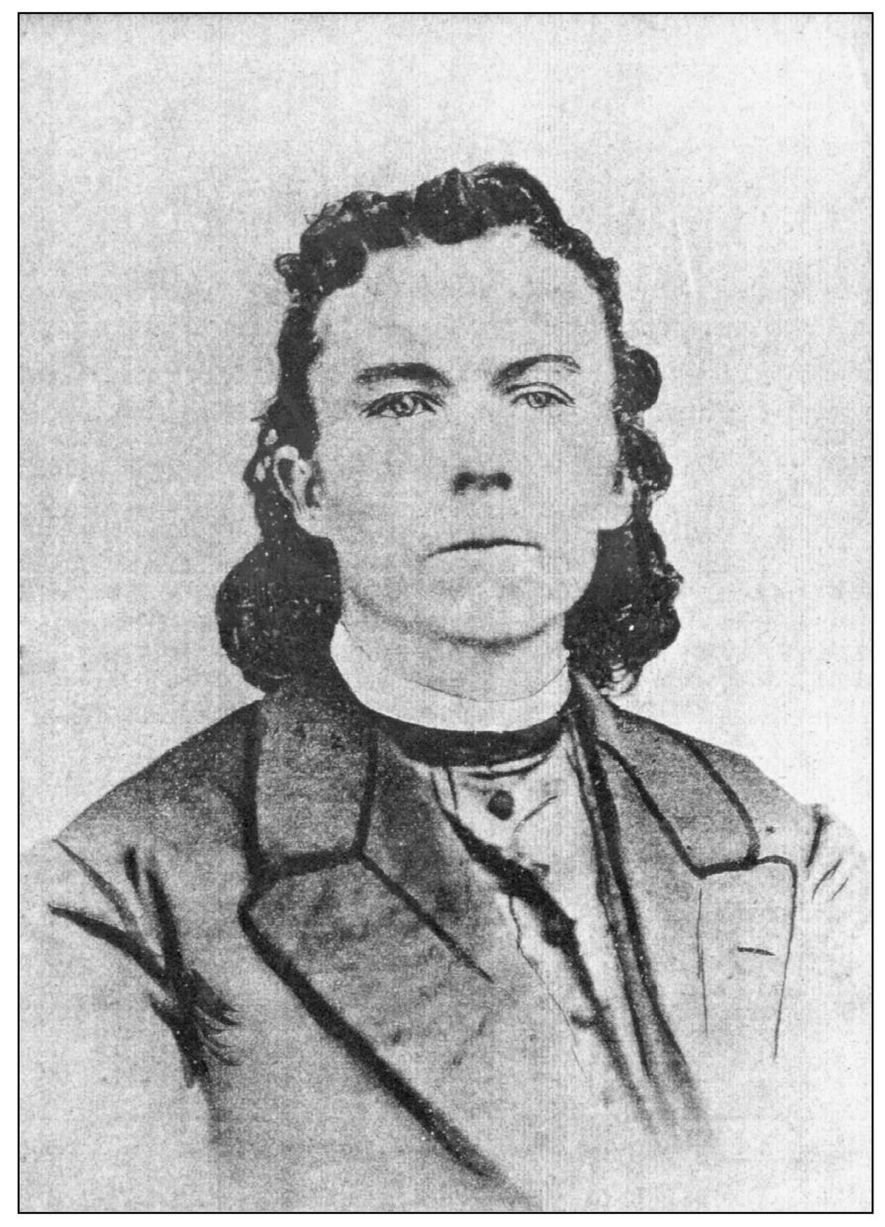
Abram Ryan was born near Hagerstown in 1838 and baptized at St. Mary’s Catholic Church. His family later moved to Missouri, and he was ordained a priest in 1860. It appears Ryan served informal stints as a freelance chaplain with Louisiana troops until his brother died of wounds in early 1863. Soon thereafter, he began serving full time as a chaplain. He was at the Battles of Franklin and Nashville in 1864. In the summer of 1865, his poem “The Conquered Banner” appeared in a New York newspaper and gained fame. He founded The Banner of the South, a weekly religious and political paper tinged with nostalgia of the Confederate army. For his life’s work, Abram Ryan became known as “The Poet-Priest of the Confederacy.” (Donald Beagle, Belmont Abbey College.)
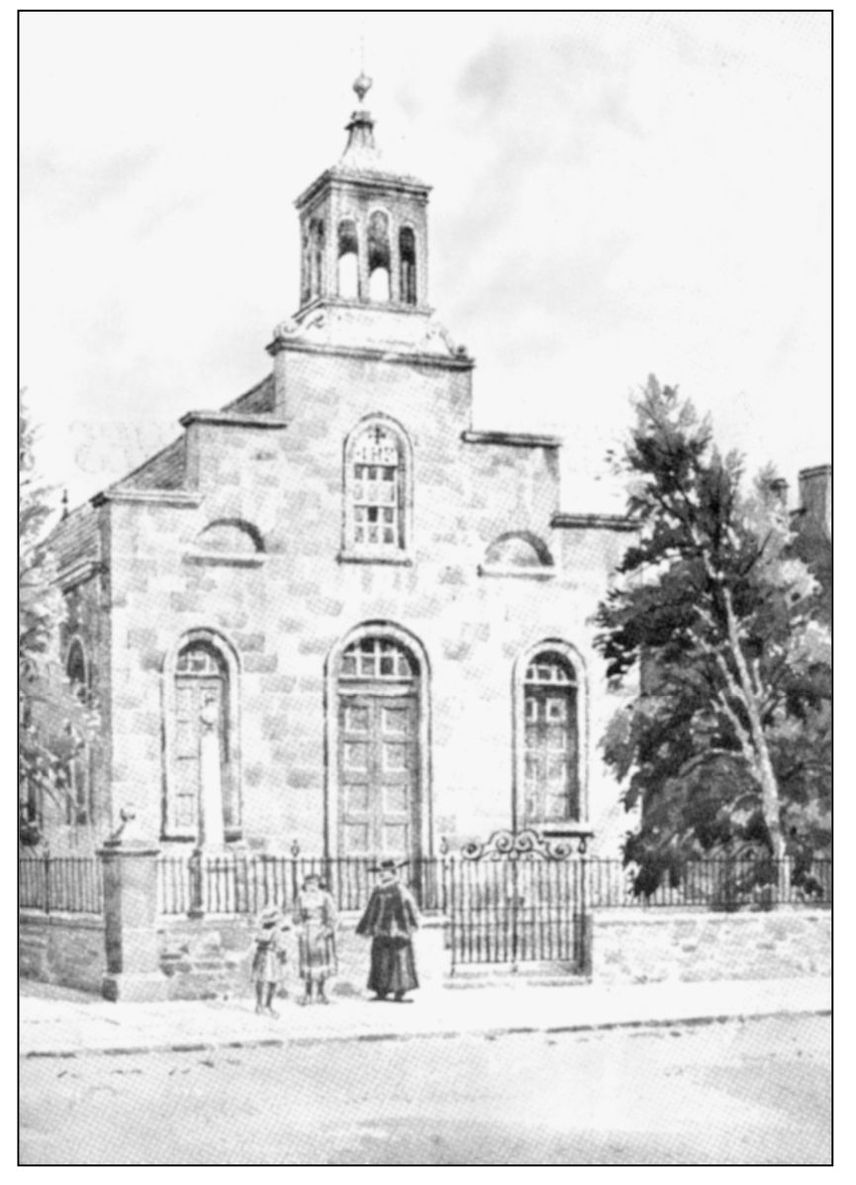
St. Mary’s started off as a log mission church and was the first Catholic church in Washington County. As the congregation grew, a new brick church was constructed on the northeast corner of West Washington and Walnut Streets in 1818. It has served as the central church for Hagerstown area Catholics for nearly 200 years. This drawing illustrates the appearance of the church during the Civil War years. Around 1870, the building was heavily renovated to create the front foyer and bell tower seen today. (Maryland Cracker Barrel.)
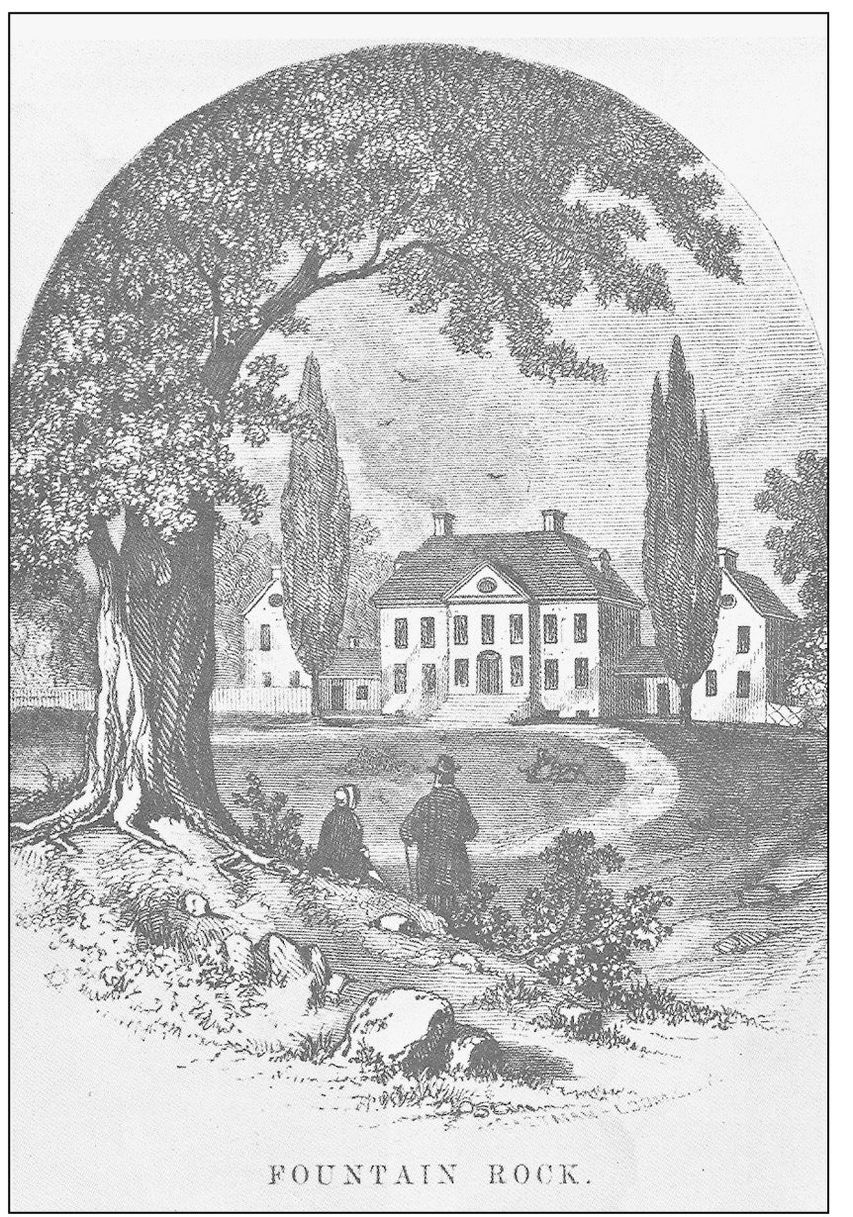
Located just south of the city, Fountain Rock was the home of Samuel Ringgold, a U.S. congressman during the War of 1812. He fathered two sons who made great contributions to the American military. Maj. Samuel Ringgold Jr. became known as “The Father of Modern Artillery” for his innovations in the use of cannon as a mobile force on the battlefield. He was killed at the Battle of Palo Alto in the Mexican War. During the Civil War period, the Ringgold house was the home of St. James College. The residence was lost to fire in 1926, but the school continues on the site to this day. (Maryland Cracker Barrel.)
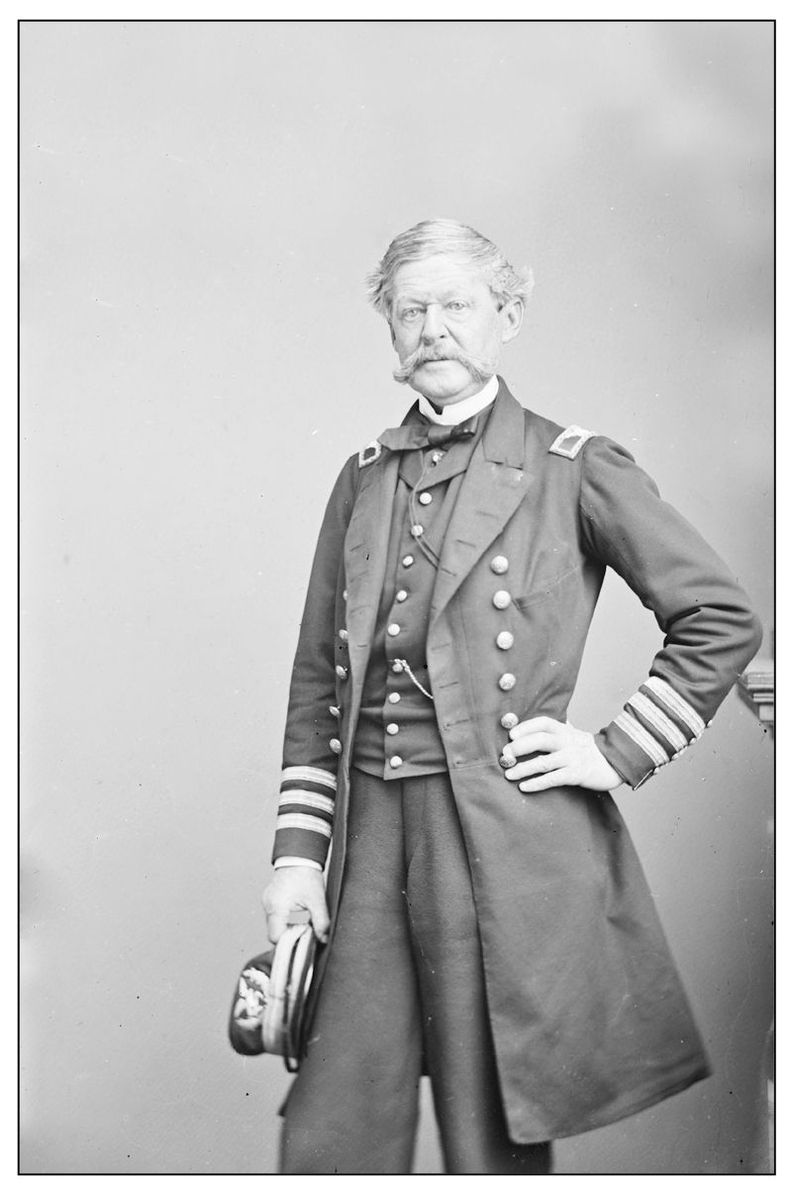
Capt. Cadwalader Ringgold was born at Fountain Rock in 1802. He entered the navy in 1819 and spent most of his career on missions exploring and charting the islands of the Pacific Ocean. Early in the Civil War, he commanded the USS Sabine, where he was credited with rescuing 400 U.S. Marines from a ship sinking off the coast of South Carolina. Ringgold later commanded ships hunting Confederate commerce raiders. He retired in 1868 with the rank of rear admiral. (Library of Congress.)
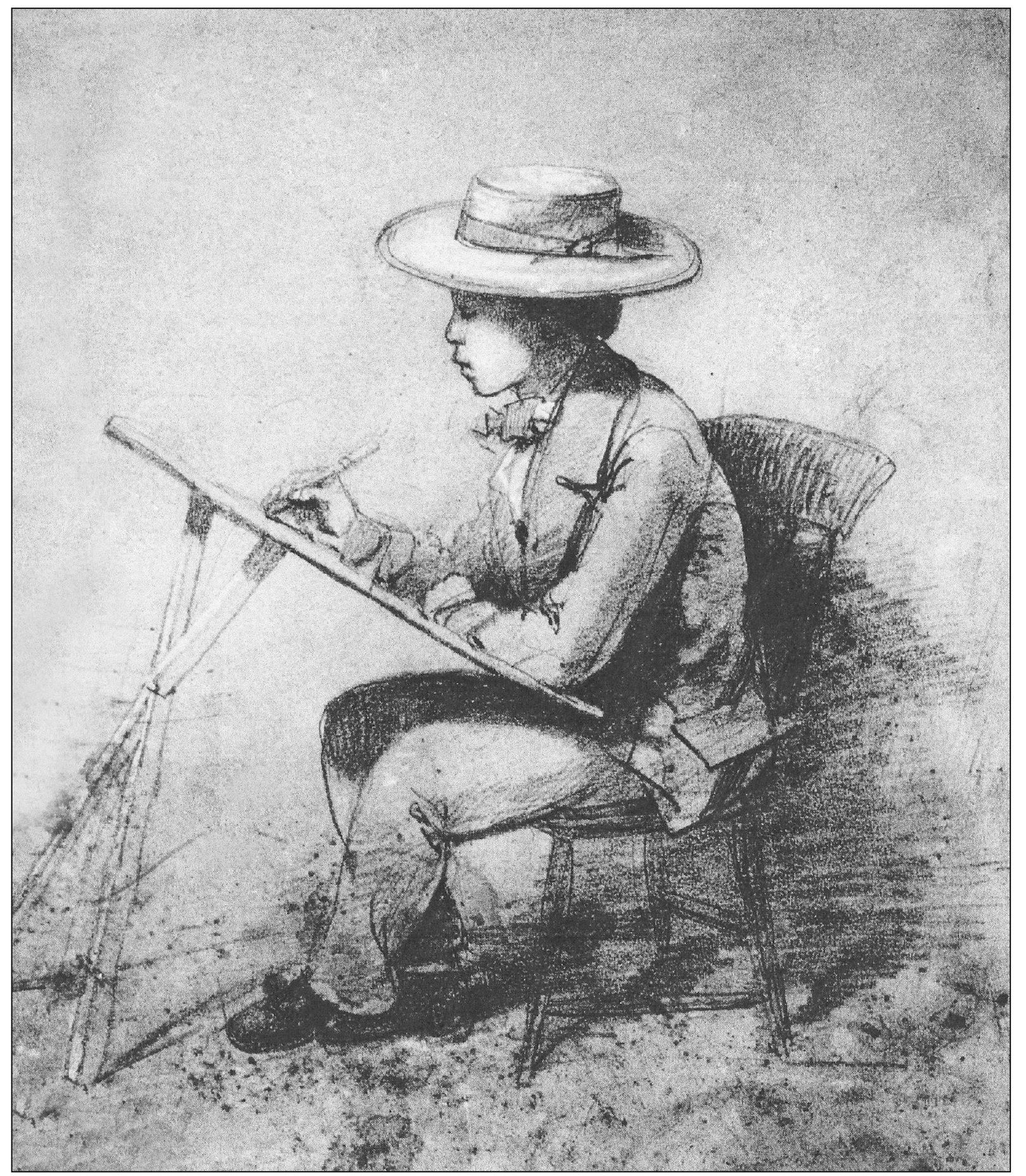
John Ross Key was the grandson of both Samuel Ringgold and Francis Scott Key. Born at Fountain Rock, he was raised by the author of “The Star Spangled Banner” in Georgetown, D.C., after the death of his parents. A natural artist, the younger Key studied in Europe and returned home to find employment as a draftsman with the U.S. Coastal Survey from 1853 to 1856. The Coastal Survey was the forerunner of today’s National Oceanic and Atmospheric Administration. He was sketched (shown) by coworker James McNeill Whistler. Both Key and Whistler became famous artists. Whistler became a leading proponent of the “art for art’s sake” movement. His painting Arrangement in Grey and Black: The Artist’s Mother, popularly known as Whistler’s Mother, is his most recognizable work. Key gained fame as a painter of frontier landscapes, many of which are held in private and museum collections around the nation. During the Civil War, Key was commissioned a second lieutenant in the engineer corps of the Confederate army. (National Oceanic and Atmospheric Administration.)
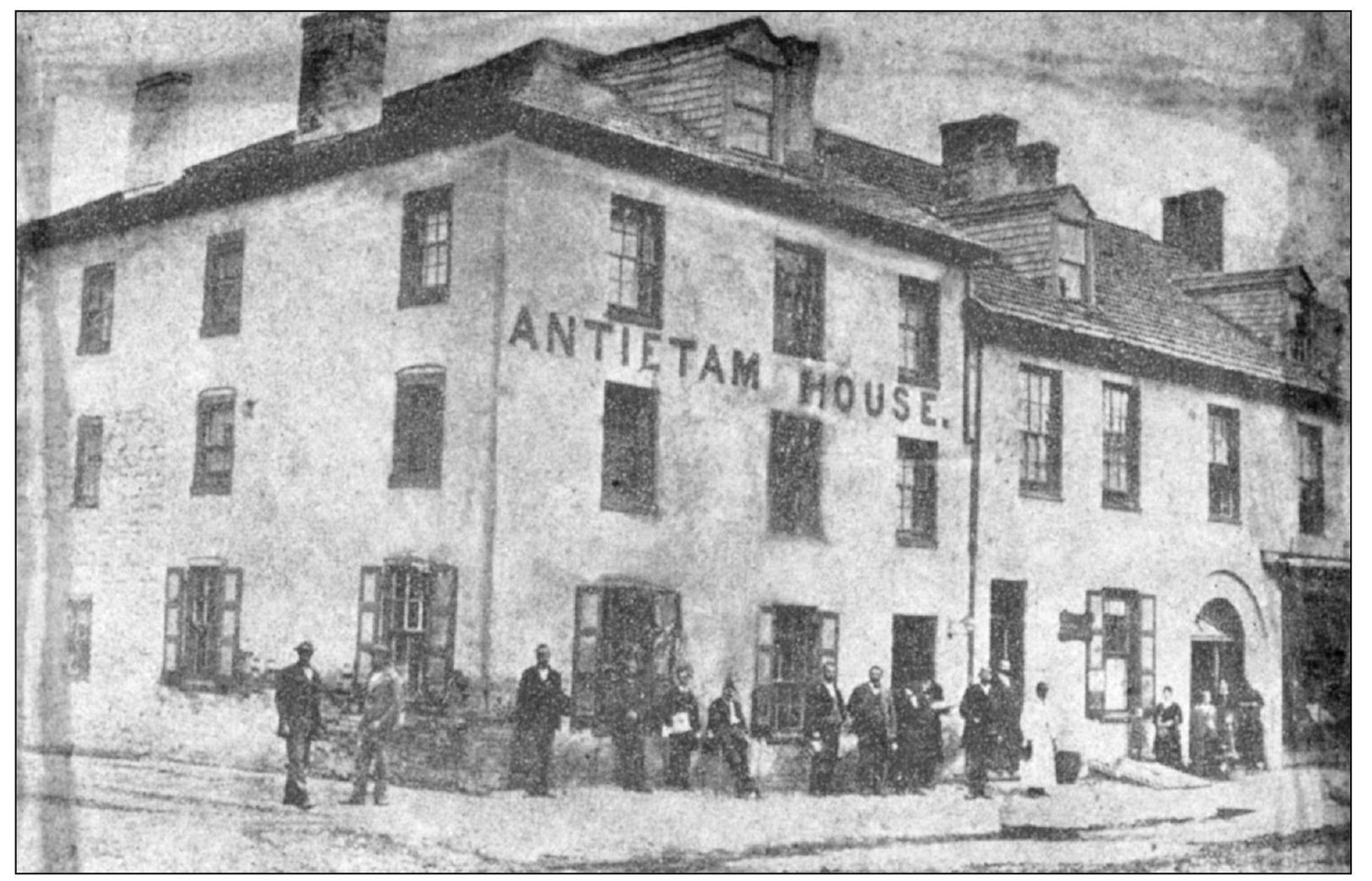
Hagerstown flourished when the National Road was constructed, using Frederick and Washington Streets as its route through town, and the city became a major stopover for travelers heading west to the frontier or east to the nation’s major cities. The Antietam House, a hotel located across Washington Street from the circuit courthouse, was razed in the 1870s to make way for the Hamilton Hotel that still stands to this day. (WMR-WCFL.)
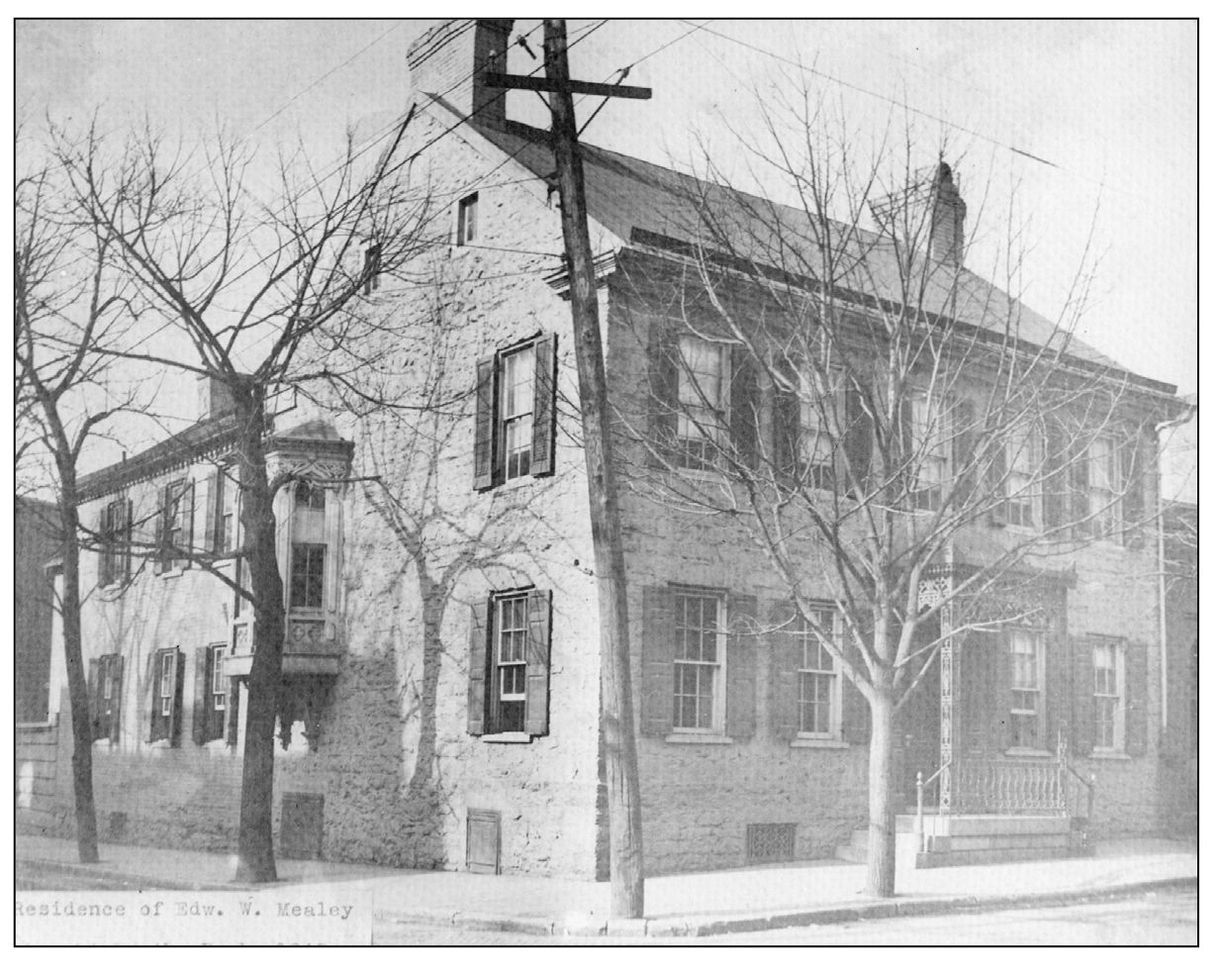
Edward Mealey was a local attorney and businessman who resided in this stone house located across South Jonathan Street (Summit Avenue) from the circuit courthouse. The home was purchased and razed for the construction of the Nicodemus Bank Building. Today the bank building is the home to the Discovery Station Childrens’ Museum
(WMR-WCFL.)
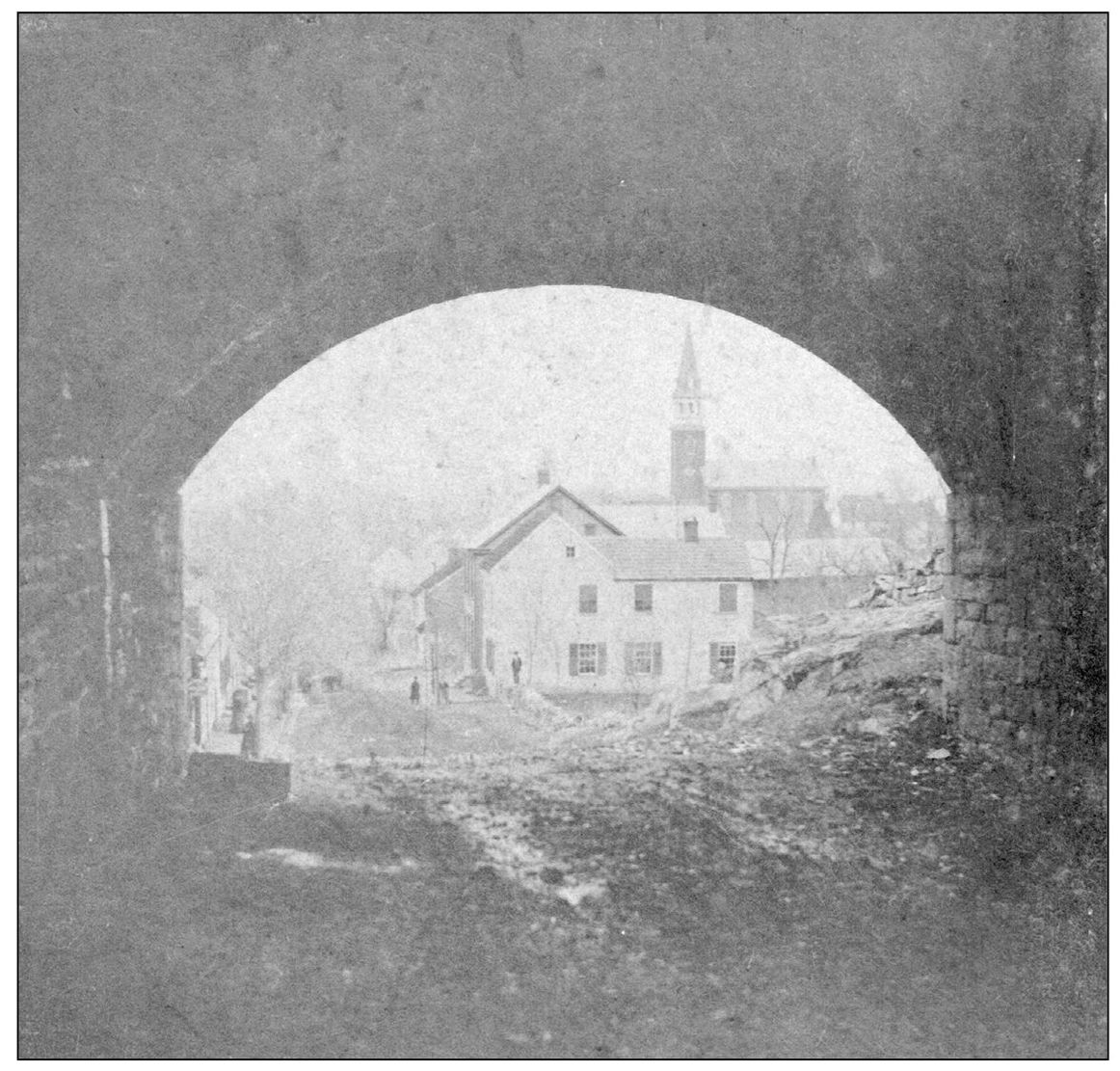
A “dry bridge” was constructed in the 1830s to carry Prospect Street over West Antietam Street. Taken from the west side of the underpass, this image captures the area looking eastward on West Antietam Street toward what is now Summit Avenue. In the background is St. John’s Lutheran Church on South Potomac Street. (WCHS.)
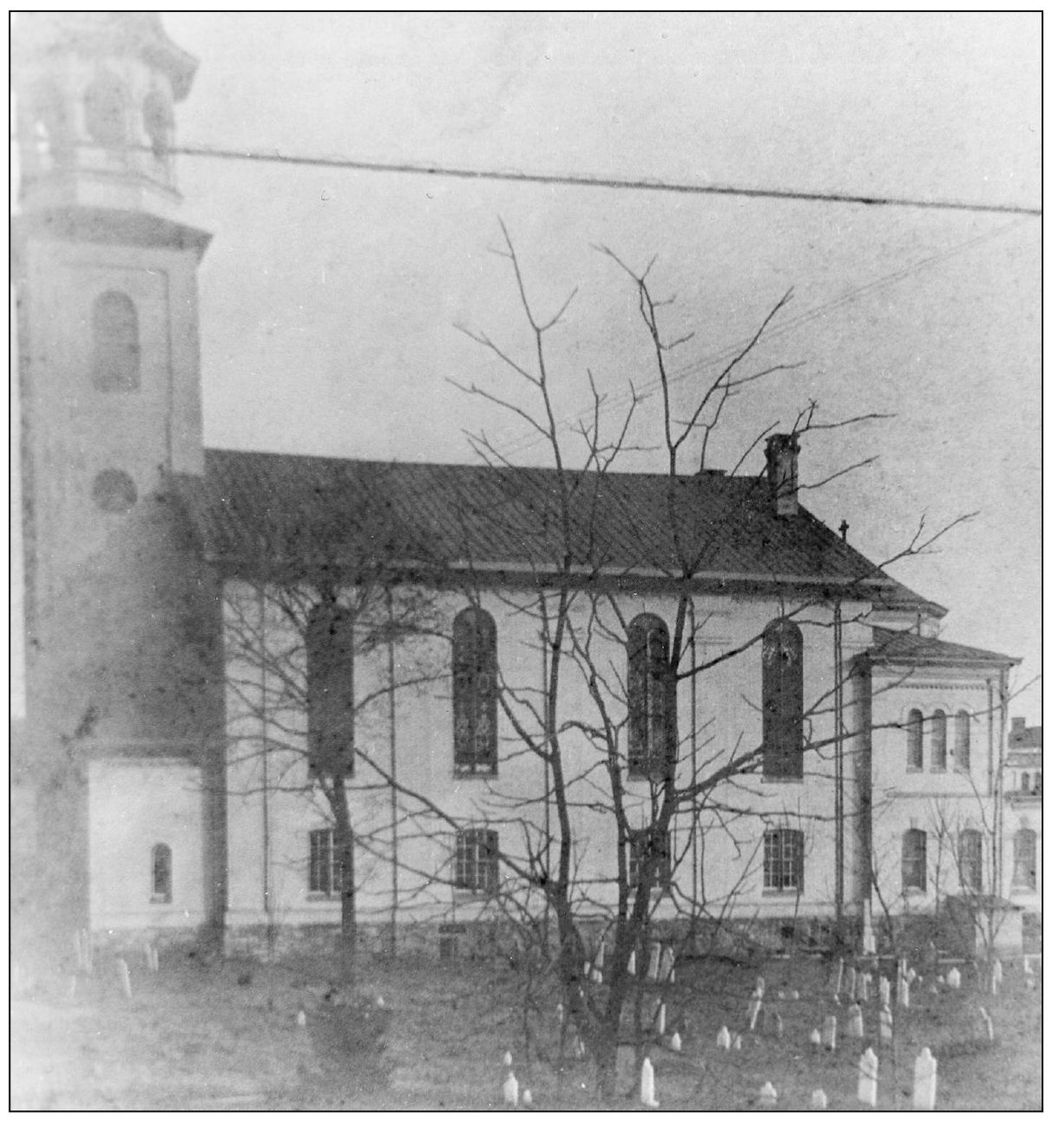
St. John’s Lutheran Church was constructed in 1794 and retains much of its original appearance today. It was located on a hill on the southern edge of town. When the Union army reoccupied Hagerstown after the Battle of Gettysburg, Maj. Gen. Oliver Otis Howard used the bell tower to observe troop movements. The cemetery was later relocated. (WCHS.)
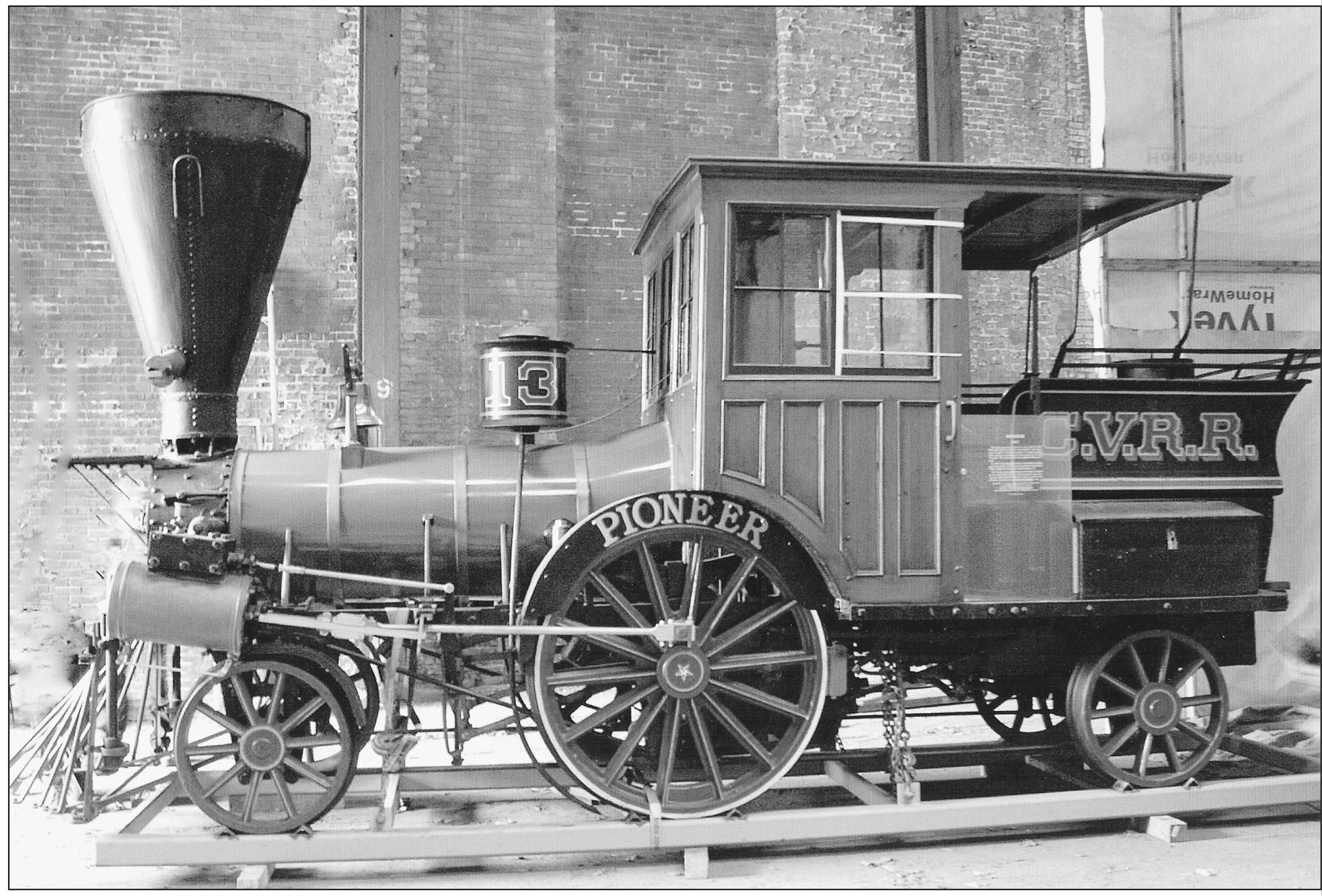
Railroad service to Hagerstown opened in 1841. The Franklin Railroad connected the city to Chambersburg, where the Cumberland Valley Railroad (CVRR) connected to Harrisburg. The Franklin Railroad failed in 1844 but was later absorbed into the CVRR. The CVRR engine Pioneer served the line between the Hagerstown and Chambersburg before the Civil War. It was retired to accessory use when the troop and supply trains required by the war effort were too large for this engine to pull. In 2010, Pioneer was delivered to the Baltimore and Ohio Railroad Museum in Baltimore for restoration and display. This recent photograph shows the Pioneer when it was displayed at the National Museum of Industrial History in Bethlehem, Pennsylvania. (Stephen Donches.)
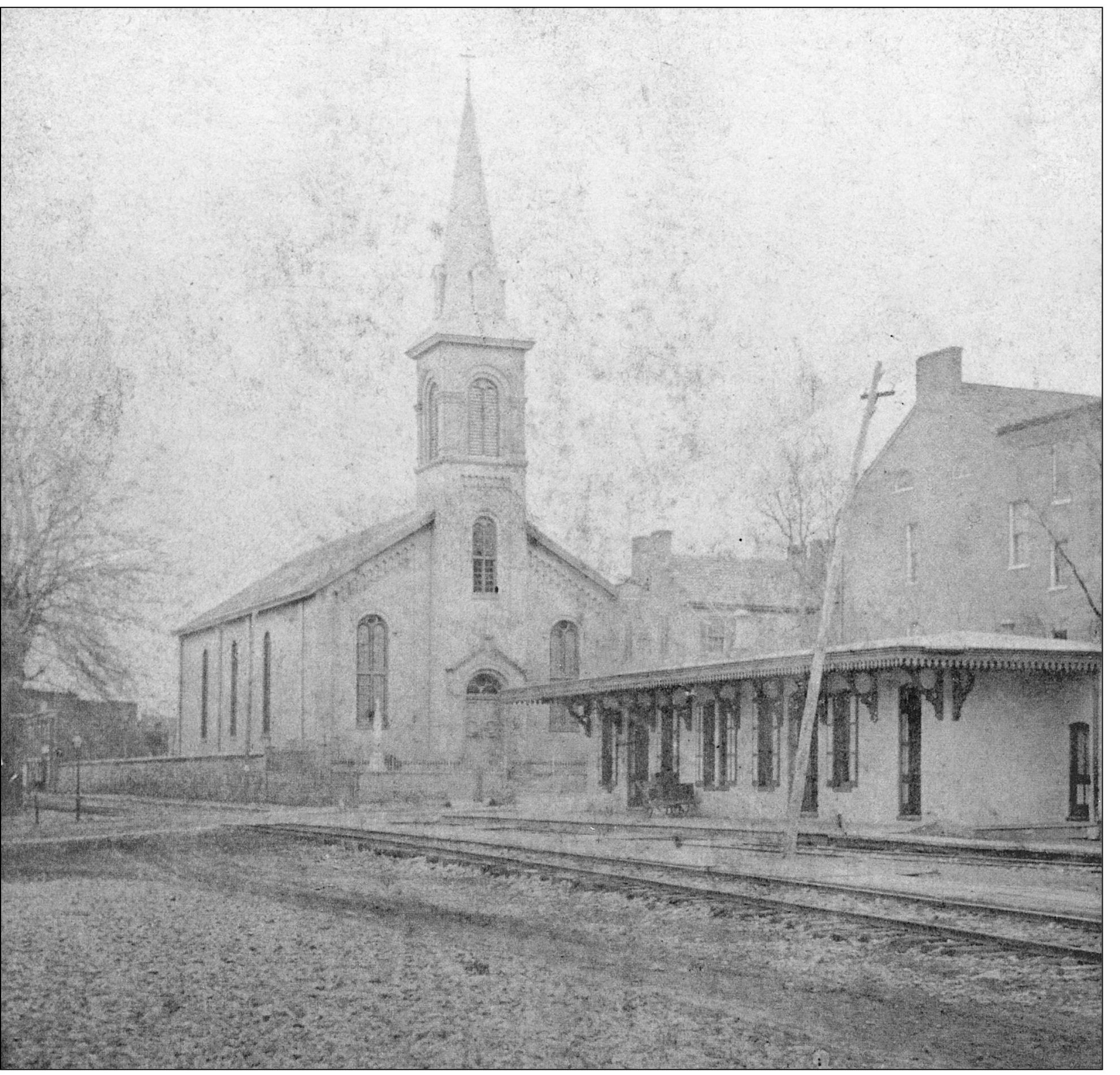
The Franklin Railroad entered town from the north on Walnut Street and terminated at Washington Street. The first depot was located diagonally across the intersection from the church (to the left of this photograph). The 1860s-era CVRR depot (above) was the second structure to serve this purpose. It was located directly across Washington Street from St. Mary’s Catholic Church. This building was replaced in the 1880s by a large Victorian railroad station. This image was taken in the early 1870s after St. Mary’s was renovated to its current appearance. (Georges Creek Historical Society.)
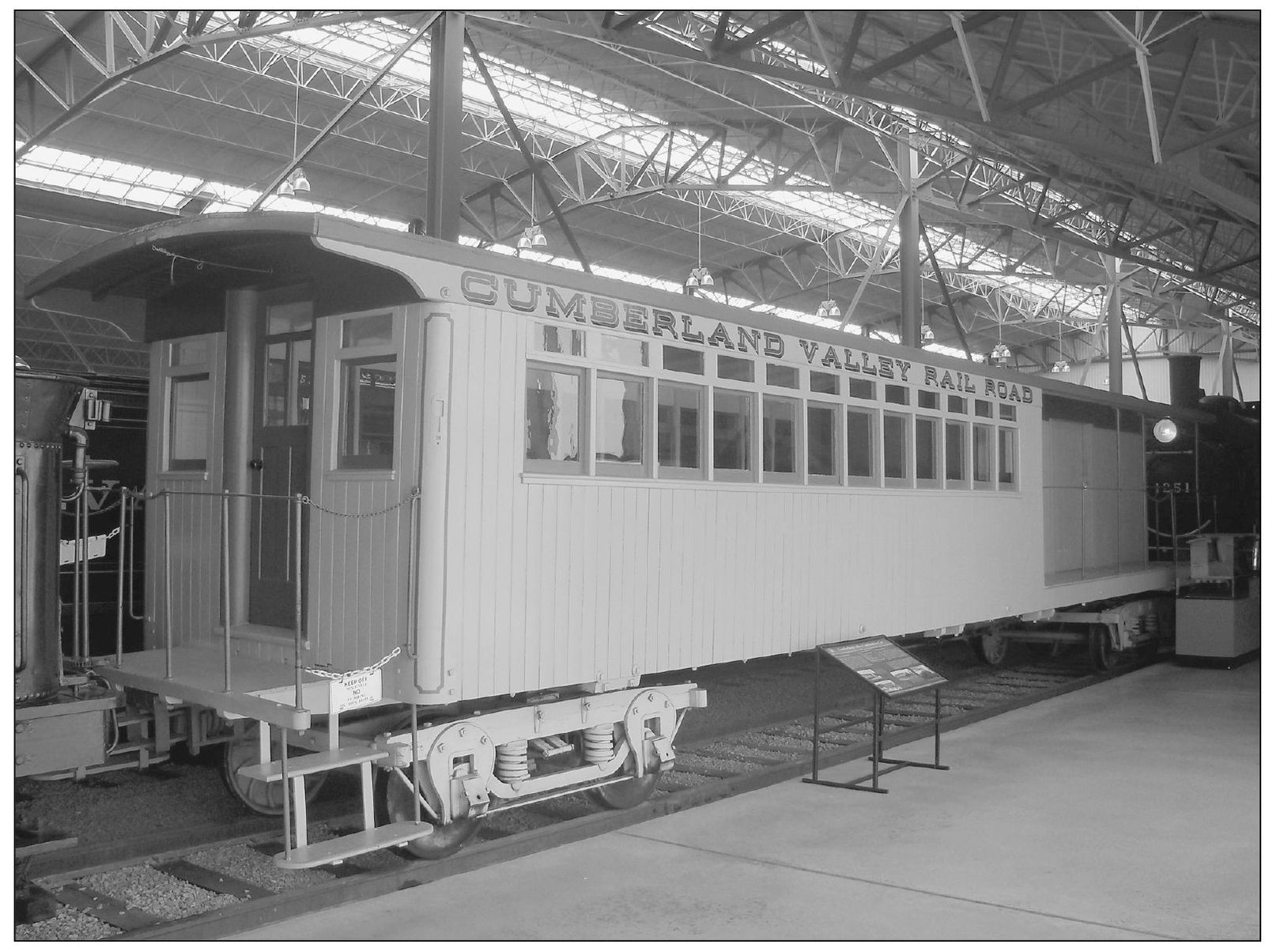
This combination passenger/baggage car was constructed for the CVRR in 1855 and represents the railroad rolling stock that would have been seen on Walnut Street in the 1850s and 1860s. It was donated by the Pennsylvania Railroad to the Railroad Museum of Pennsylvania in Strasburg, where it is displayed. (Author’s collection.)
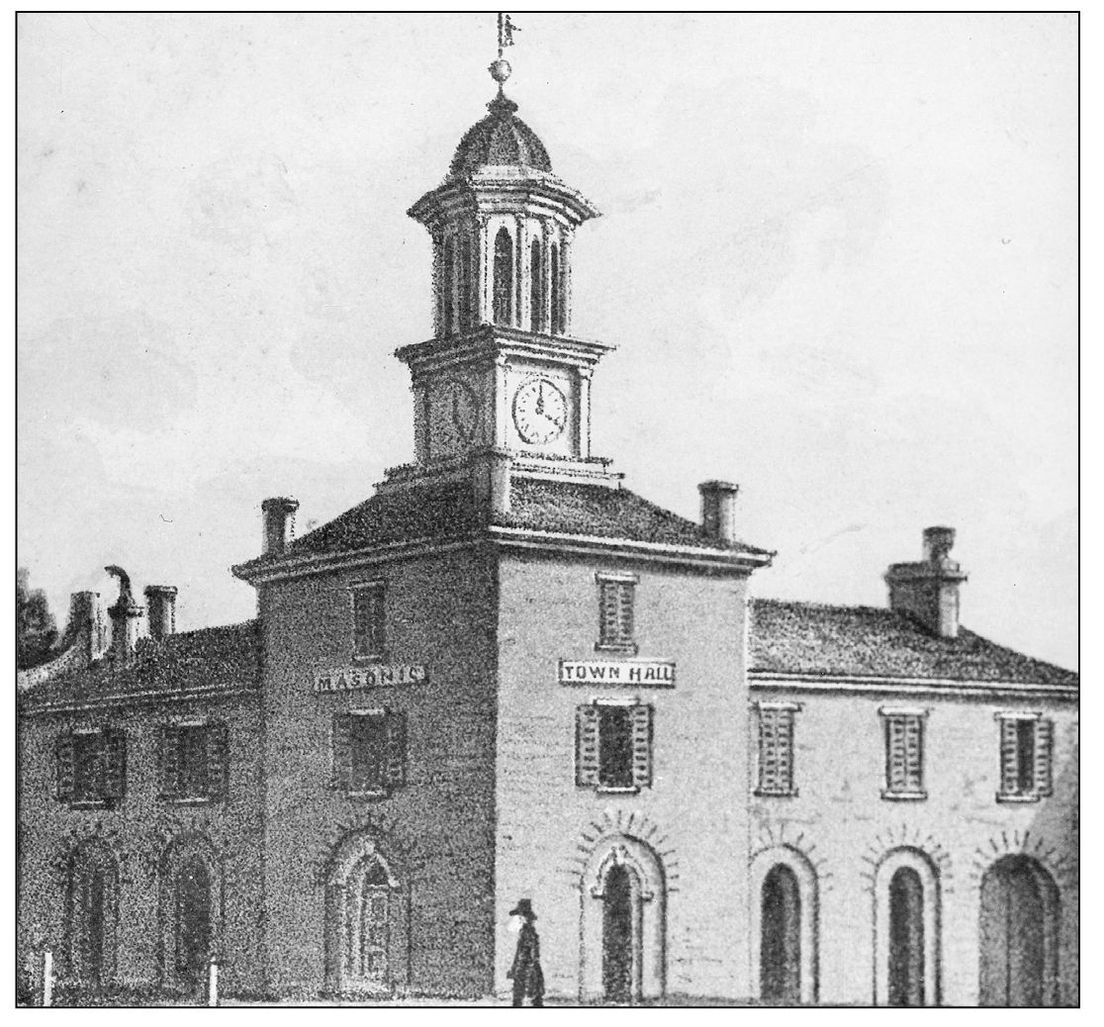
Hagerstown’s second town hall was constructed on the southeast corner of Potomac and Franklin Streets in 1818. Prior to this, the town hall was in the middle of Public Square. The tower was heavily altered in the late 1800s, and the building was removed in 1937 to make way for the new city hall, which has been located on this site since it opened in 1941. (City of Hagerstown.)
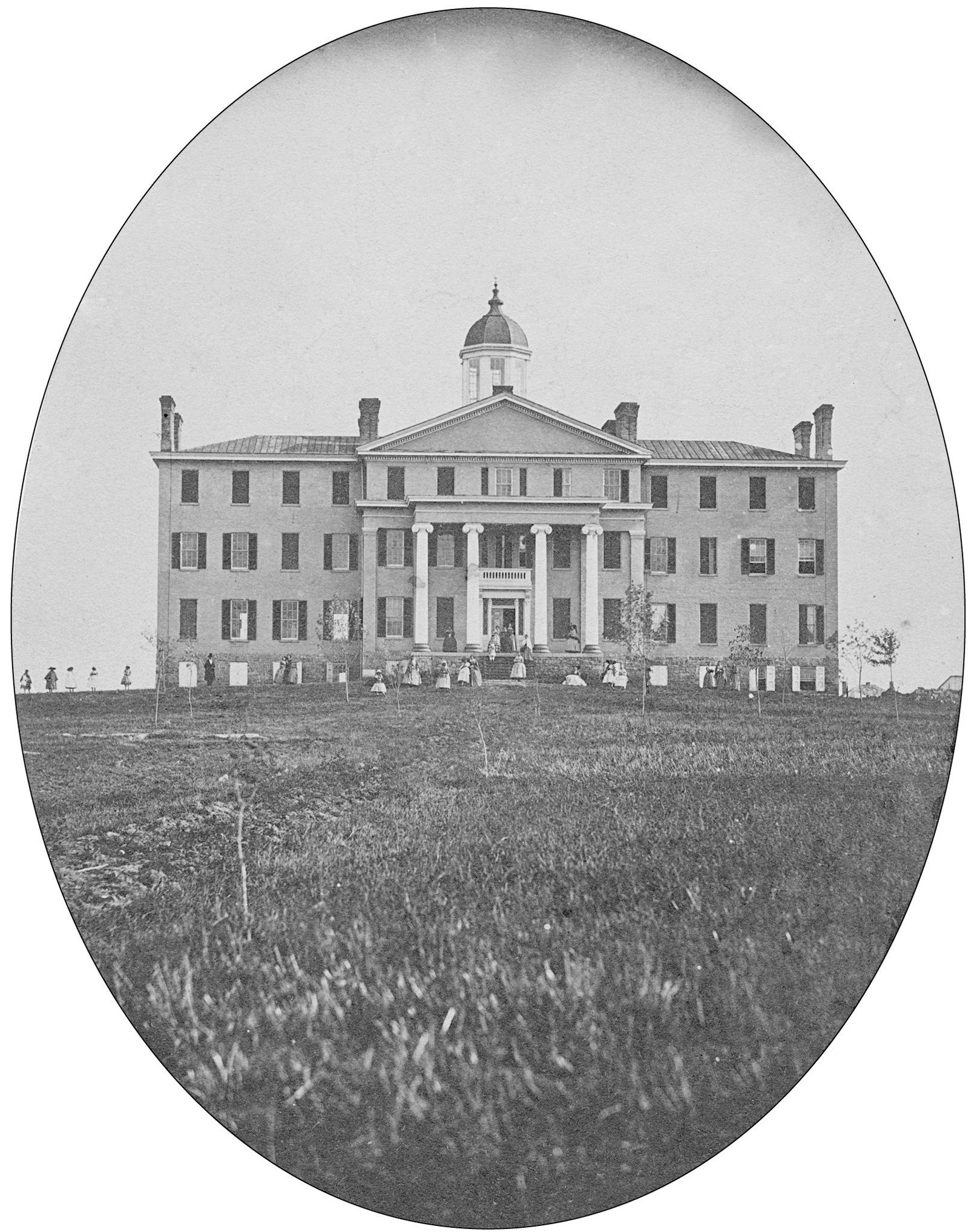
Kee Mar College opened in 1853 as a collegiate-level institution for young women. Located on a prominent hill on the east side of town, its site was where King Street is today. Kee Mar operated into the 20th century. The Washington County Hospital moved into the former school on April 1, 1912, and remained there for over 98 years until it moved east of the city in late 2010. The building, pictured here around 1857, was used as a Union army headquarters for Gen. Robert Patterson in the summer of 1861 and as a military hospital at various times during the war. The building was removed in the early 20th century. This may be the oldest outdoor photograph of Hagerstown known to exist. (WCHS.)
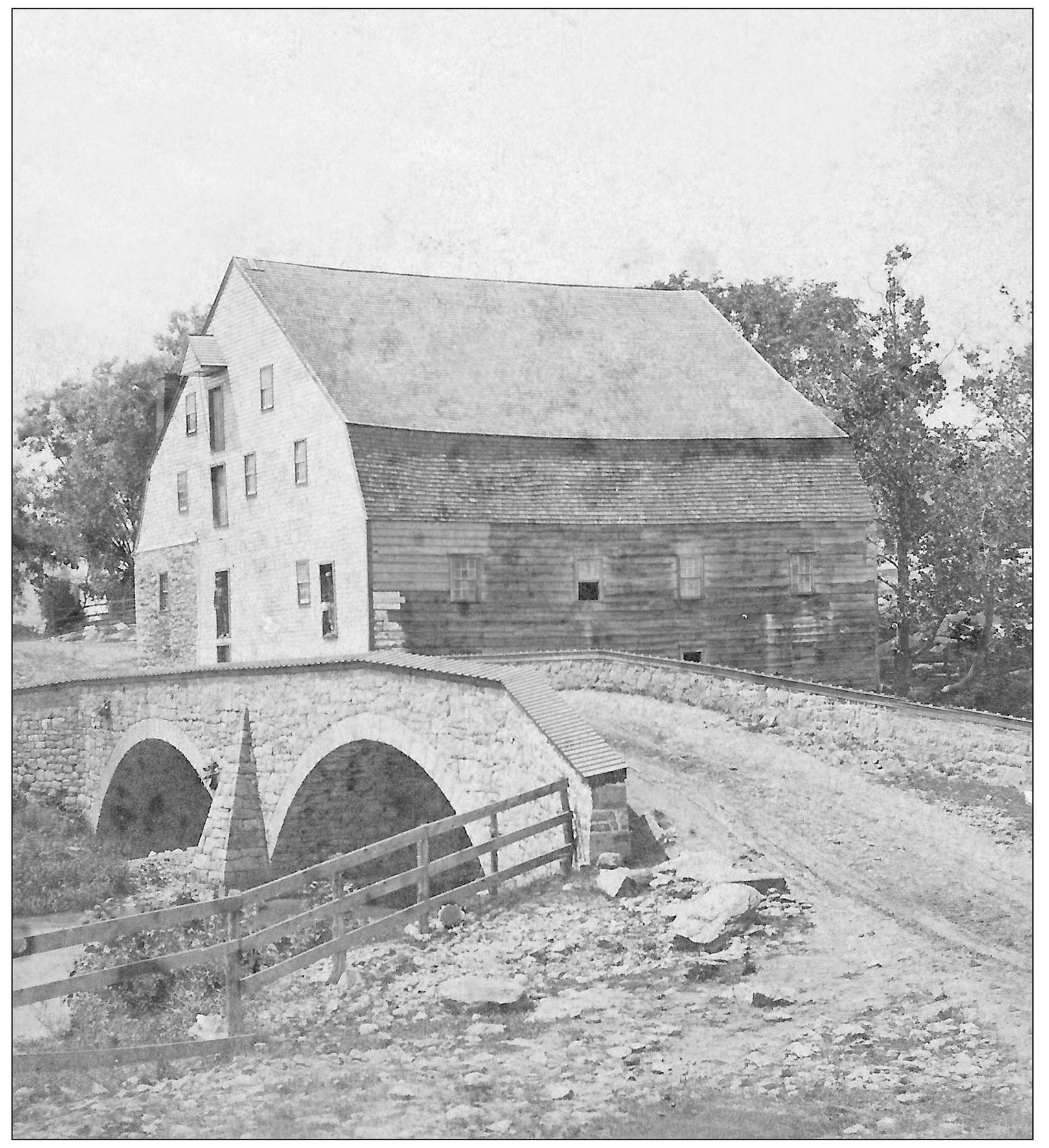
The John Stull Mill site bears little resemblance to its current appearance. The large frame mill stood on the west bank of the Antietam Creek at the Mount Aetna Road crossing from the 1730s until it burned in 1885. A new mill was then built that survived until 1925. The c. 1844 stone arched bridge carried Mount Aetna Road across the famous creek. The site was later bought by the city, and the Municipal Electric Light Plant was constructed to the left. The bridge stood until around 1980 when it had to be replaced with a modern span capable of accommodating the large number of automobiles that travel through that area. A Civil War–era newspaper drawing showing Union troops crossing this bridge on July 12, 1863, can be seen in chapter three. This photograph appears in a stereograph created by Elias Recher around 1880. (WMR-WCFL.)

Another view of the mill, seen from the north. The mill machinery was powered by a waterwheel in Marsh Run. The stream bed was later relocated to run along Memorial Boulevard and enter the Antietam Creek at the Municipal Electric Light Plant. This image also was the artistry of Elias Recher. (WMR-WCFL)
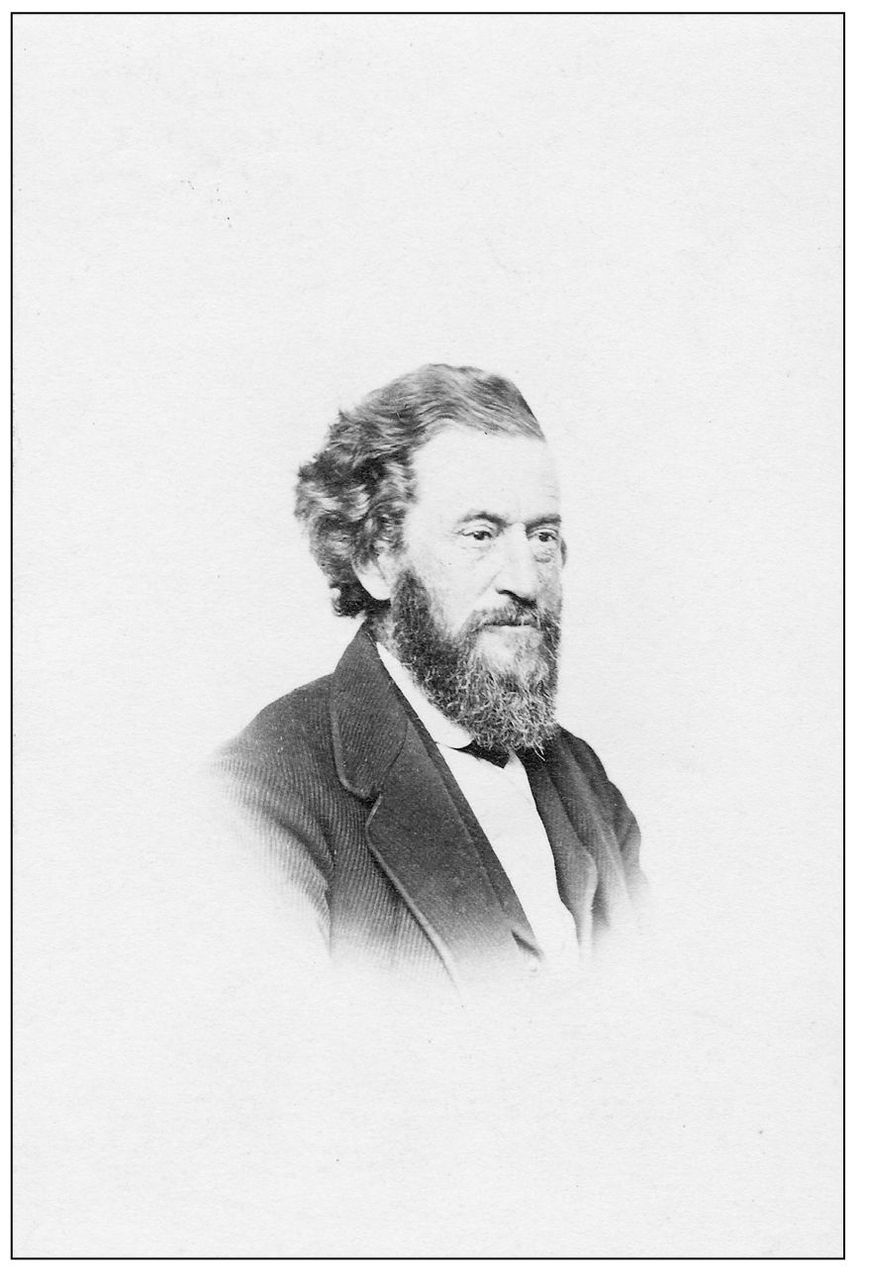
Heyser’s Woods was a popular and scenic location on the south edge of town along the Williamsport Road. John H. Heyser (right) constructed his home (below) between 1843 and 1846. Starting in 1854, he allowed the Hagerstown Fair Association to hold fairs here, which were suspended due to the Civil War. Heyser’s Woods served as an army campsite at times throughout the war. (WCHS.)
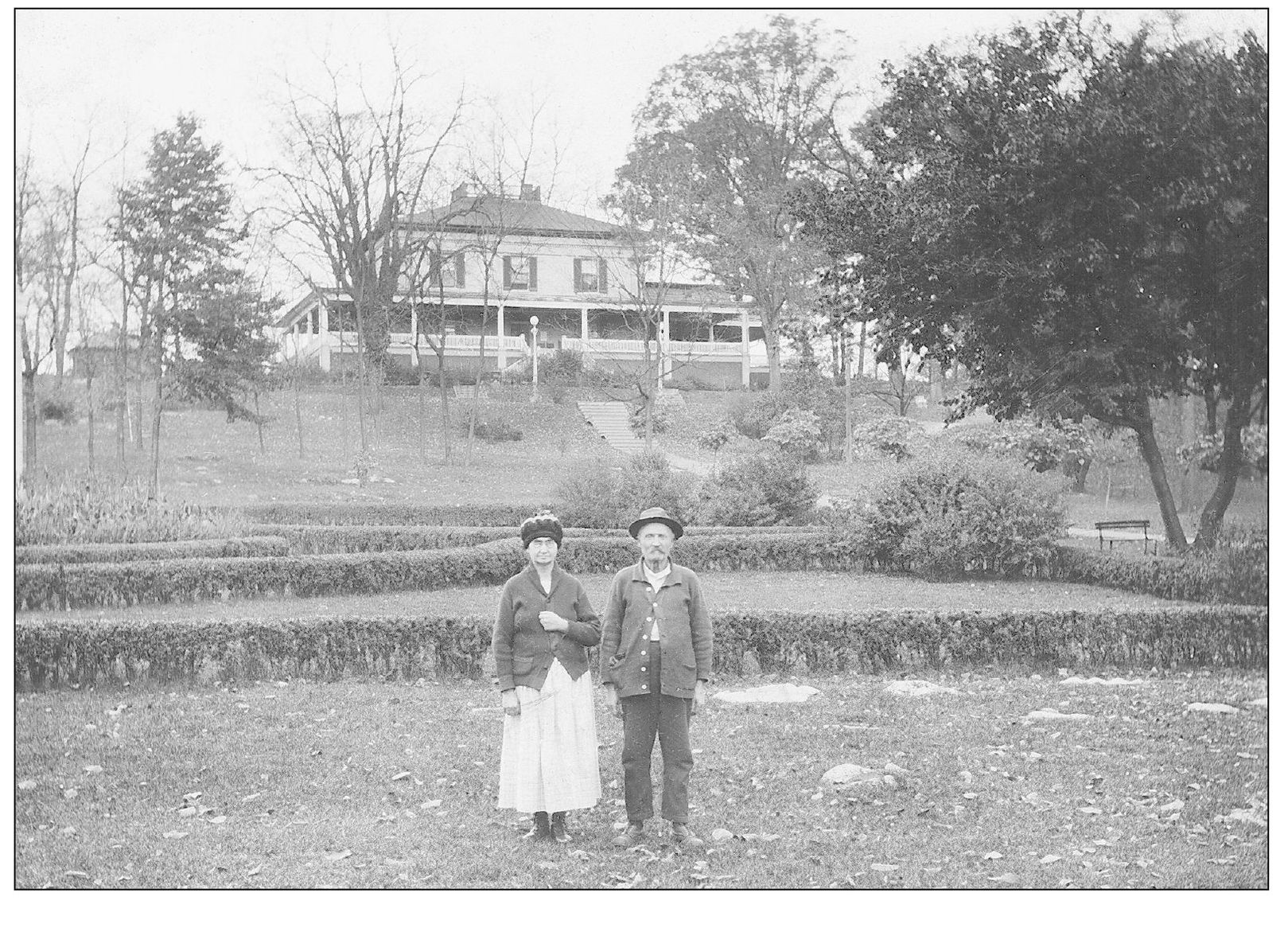
In 1915, the city purchased Heyser’s Woods and created City Park. Heyser’s home stands today and is known as the City Park Mansion House. Pictured here are John C. Snavely and wife, around 1920. John Snavely was employed by the City of Hagerstown as the park’s caretaker. (WMR-WCFL.)
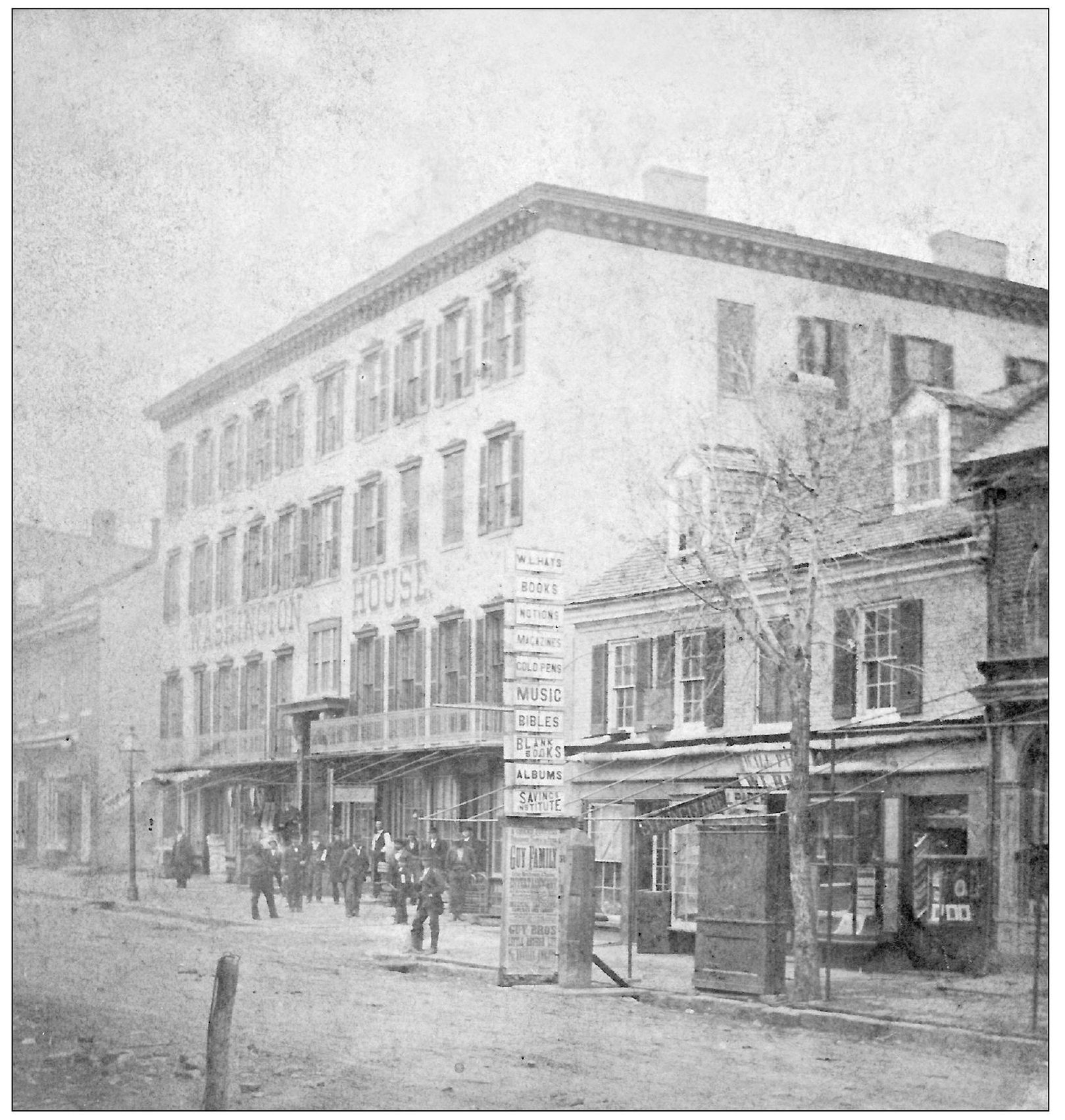
A fugitive from justice in Kansas, abolitionist John Brown checked into the Washington House Hotel on June 30, 1859, using the alias “Isaac Smith.” His mission: find a base of operations from which he would launch a slave revolt, targeting the weapons at the U.S. Armory in Harpers Ferry. He quickly leased a property from the estate of Robert Kennedy, located south of Sharpsburg, and began assembling his force and supplies. (WCHS.)
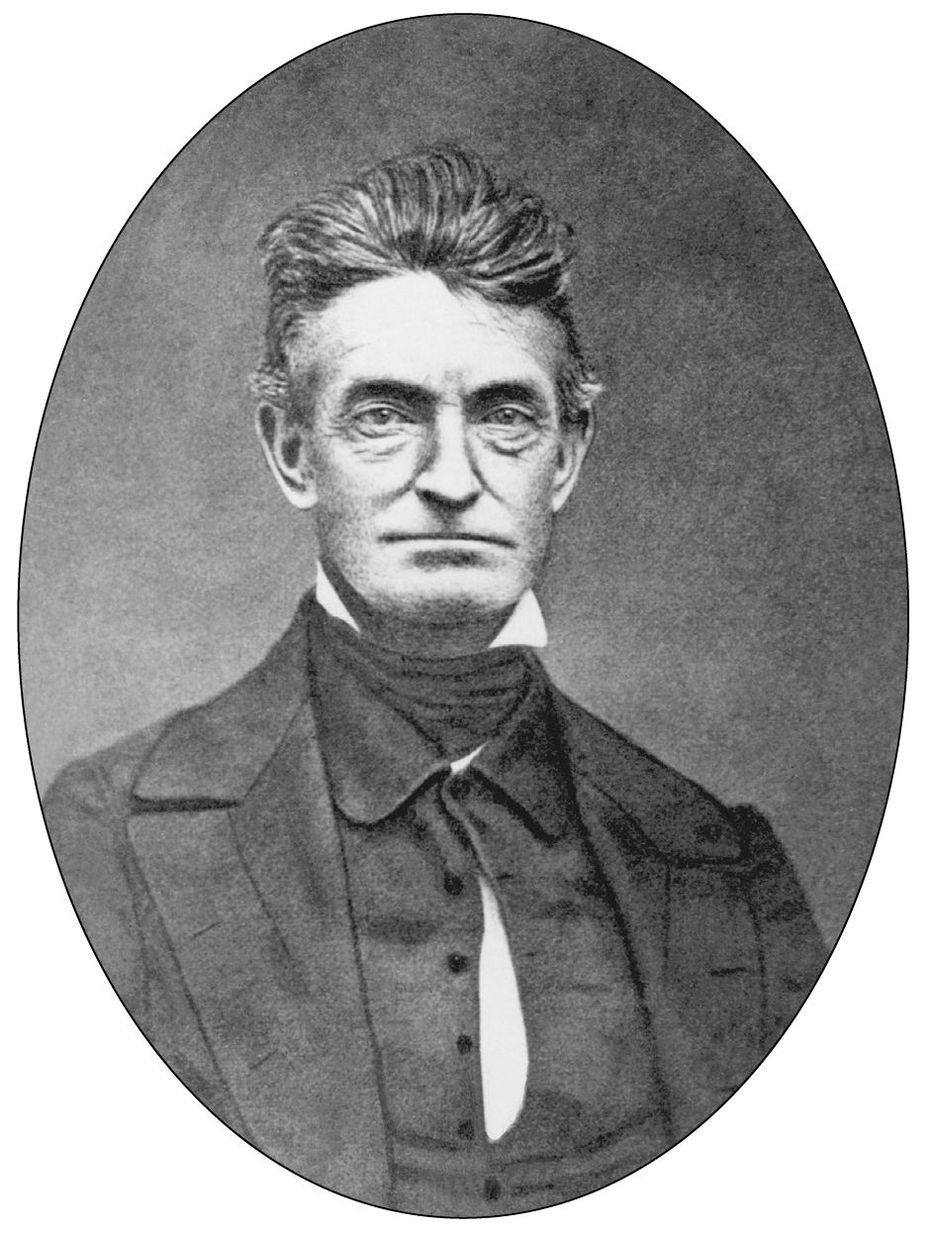
Brown escaped detection by local residents through the use of an alias and changing his appearance. As he was a nationally known fugitive, Hagerstonians would have recognized Brown from newspaper drawings made of this and similar photographs showing him clean-shaven. However, by the time he came to Hagerstown, Brown had grown a full, flowing white beard. The use of the assumed name and beard afforded him the anonymity he needed to execute his plans. (Author’s collection.)
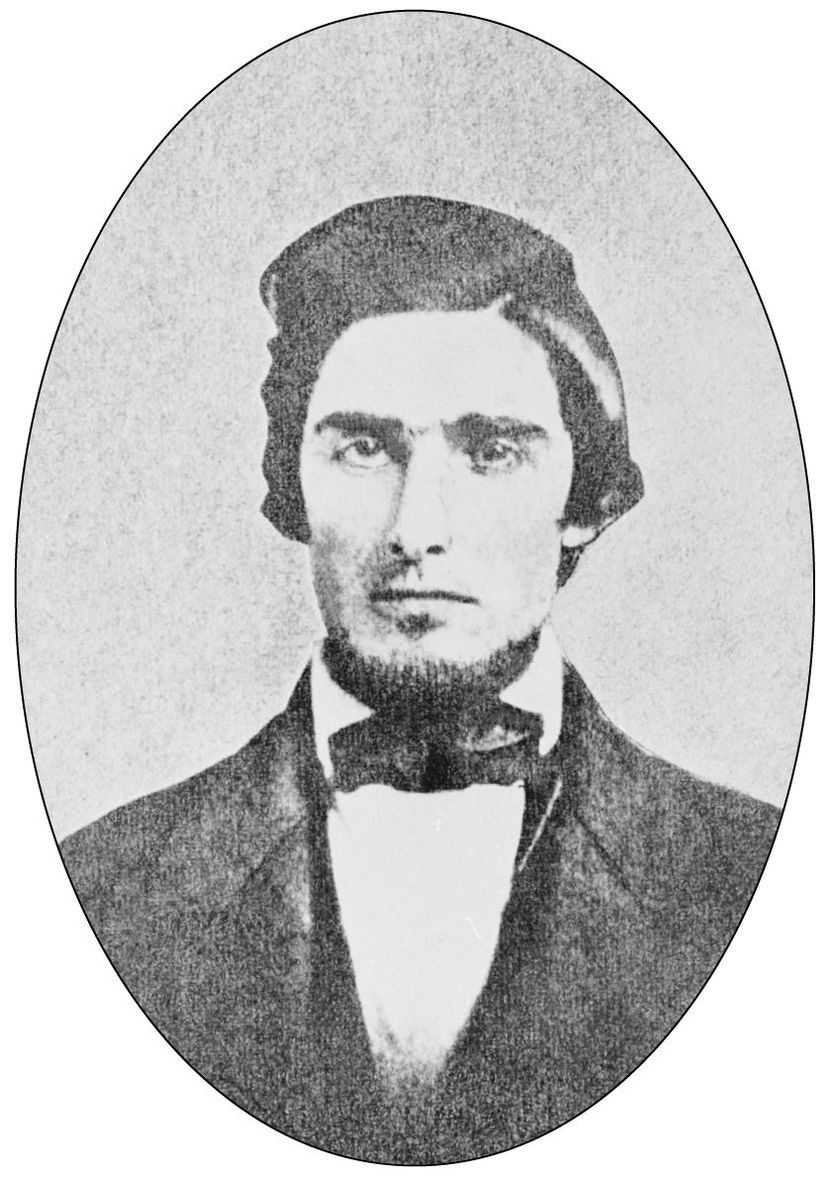
Jeremiah G. Anderson was a native of Indiana and a veteran of Brown’s activities in Kansas. When the raid commenced, Anderson was placed in charge of the area within the armory grounds, operating from the fire engine house. When events took a bad turn, Brown and others joined Anderson at the fire engine house, where they made their last stand. When U.S. Marines assaulted the building, Anderson went down fighting and died of bayonet wounds soon after the assault. (Author’s collection.)
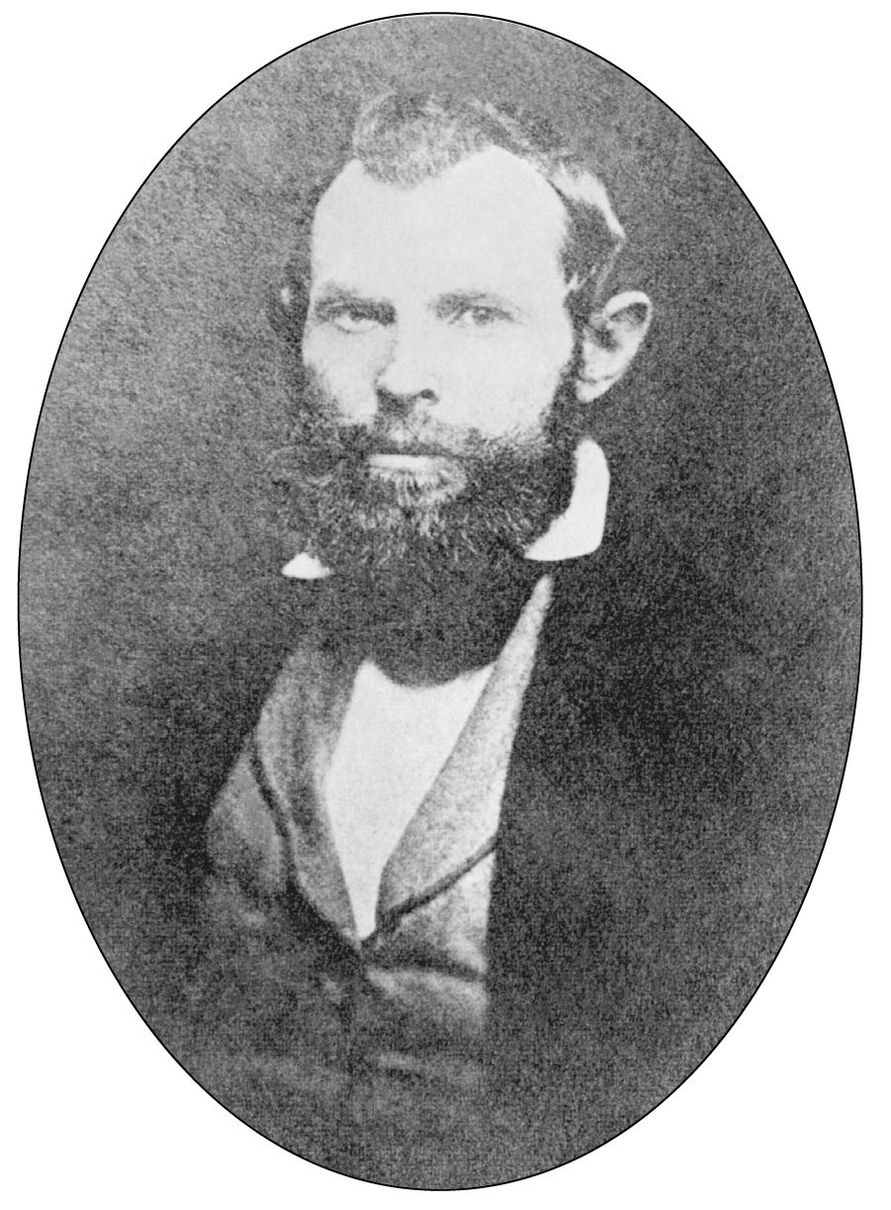
Owen Brown was his father’s chief lieutenant and his hotel roommate at the Washington House. During the raid, he was in charge of a rear guard that remained in Maryland and was also tasked with transporting captured weapons to an abandoned schoolhouse near the Kennedy farm. When he determined that the raid had been foiled and their compatriots were trapped, Owen led his party over the mountains and escaped into Pennsylvania. After the Civil War, he moved to California, where he enjoyed a quiet notoriety as the last survivor of Brown’s raiders, passing away in 1891. (Author’s collection.)
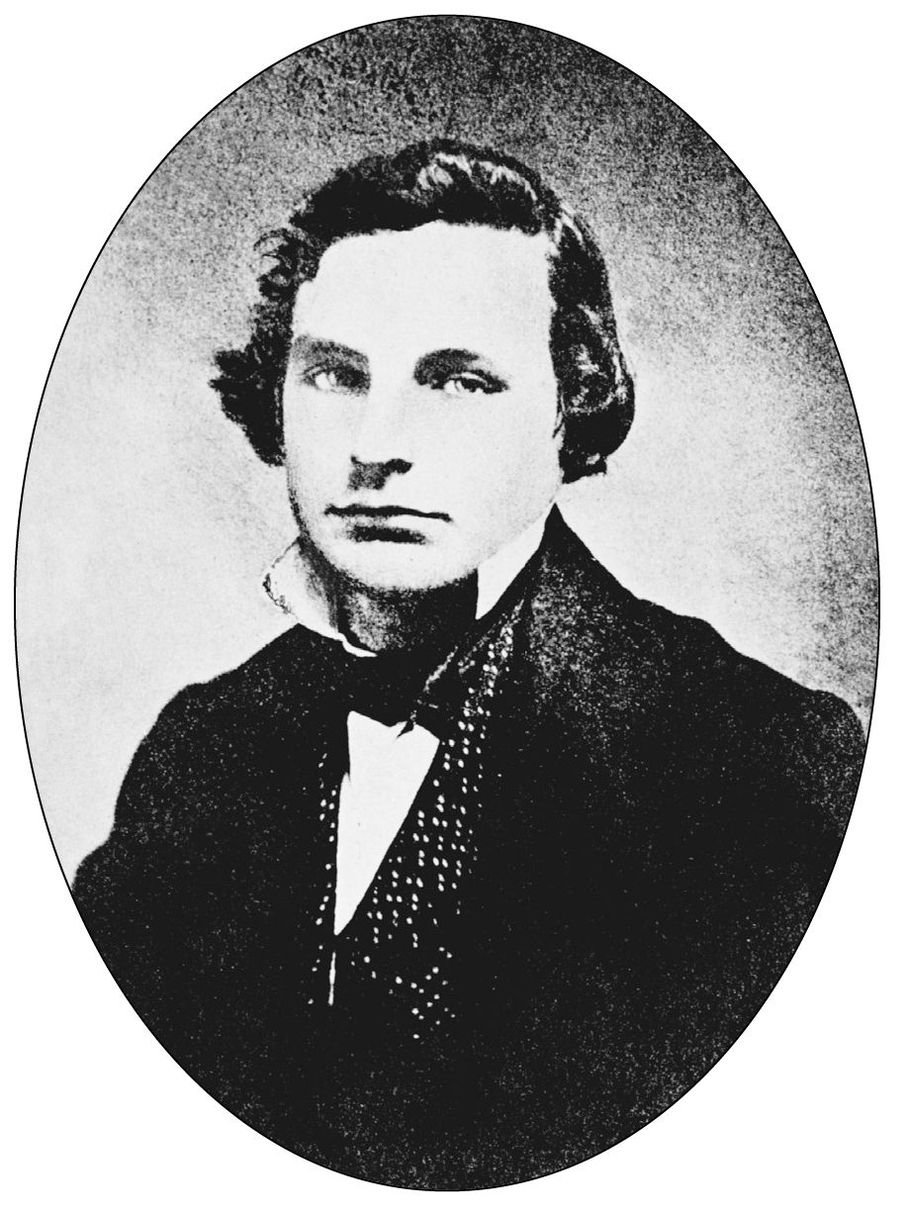
Oliver Brown was the youngest of Brown’s sons to survive to adulthood. When the Kennedy farm was secured, his sister and his wife came to take care of Brown’s “army.” They were sent home just before the raid. Oliver was one of the few raiders at the engine house who showed a flag of truce, hoping to end the hostilities. But the enraged citizens fired. Mortally wounded, Oliver was dragged back into the engine house. As he was suffering greatly, his irritated father exhorted him to “die like a man.” He passed away later that night before the Marine assault began. (Author’s collection.)
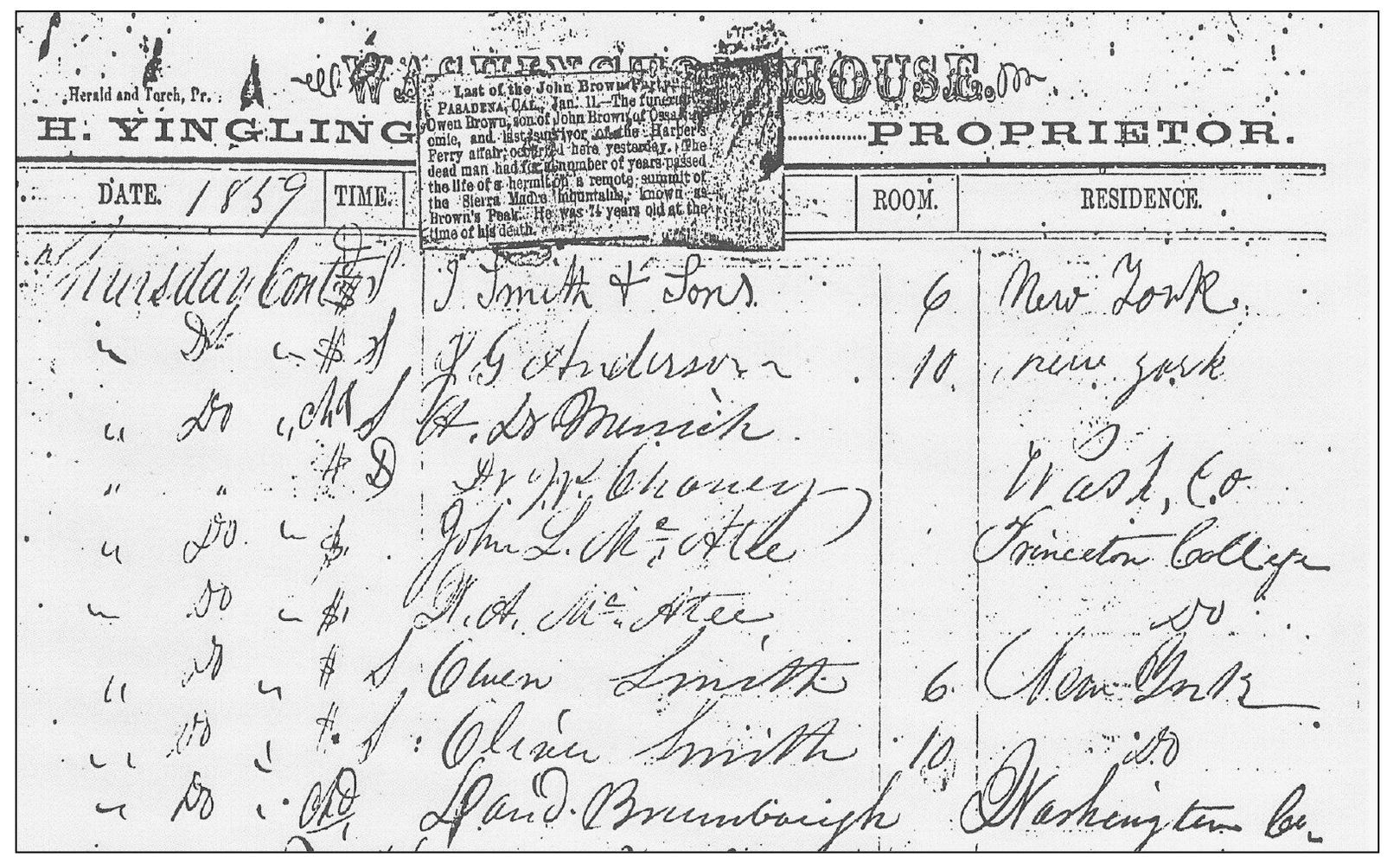
The original guest register of the Washington House shows Brown and his son Owen occupied Room 6, and son Oliver and Jeremiah G. Anderson were in Room 10. The Washington House was located on West Washington Street where the University System of Maryland Center at Hagerstown campus is located today. The hotel burned in 1874. (WMR-WCFL.)
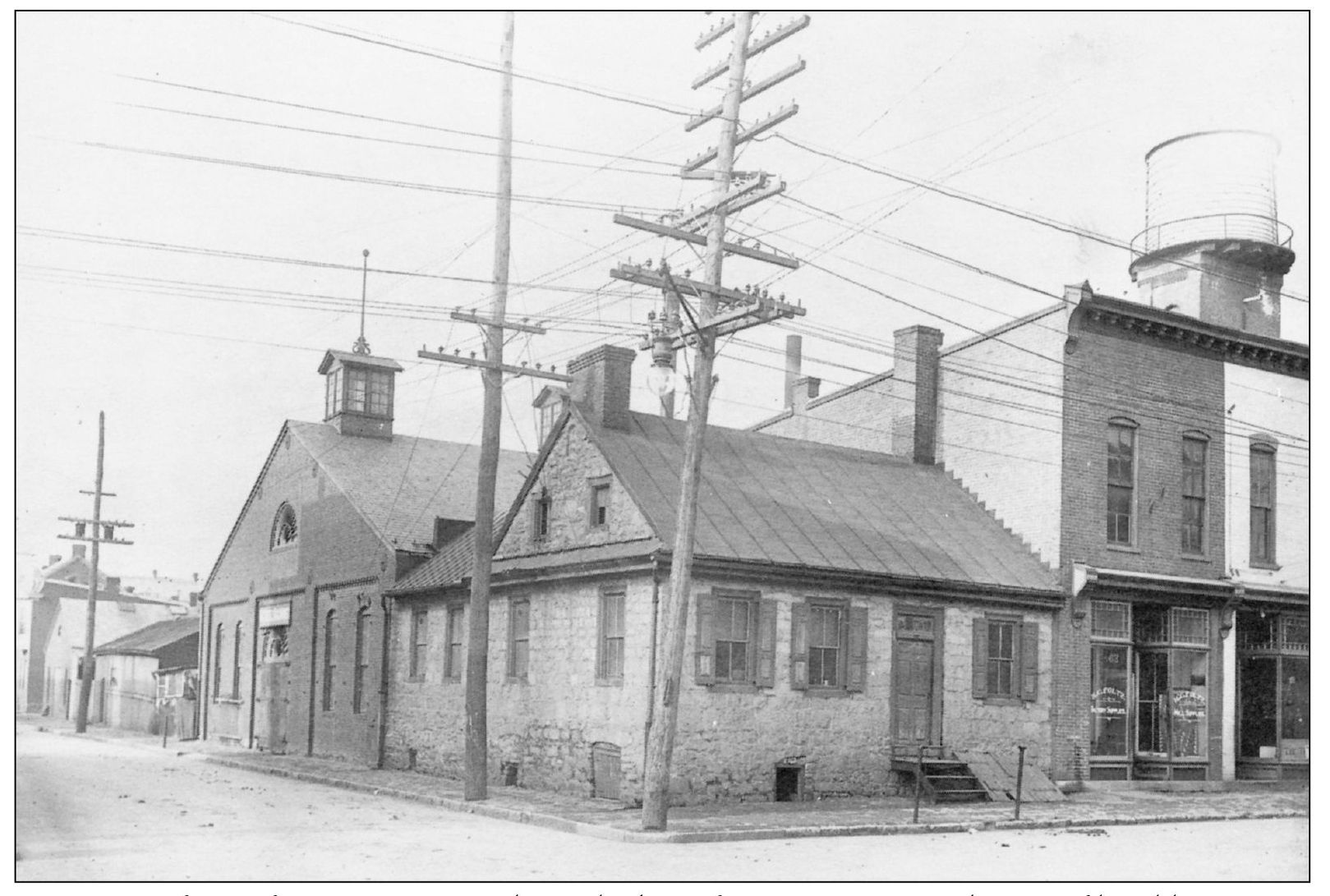
A common form of construction in the early days of Hagerstown was the use of local limestone. This building stood on the southwest corner of East Washington Street and Locust Street until replaced by the current Foltz Manufacturing Company building. (Maryland Cracker Barrel.)
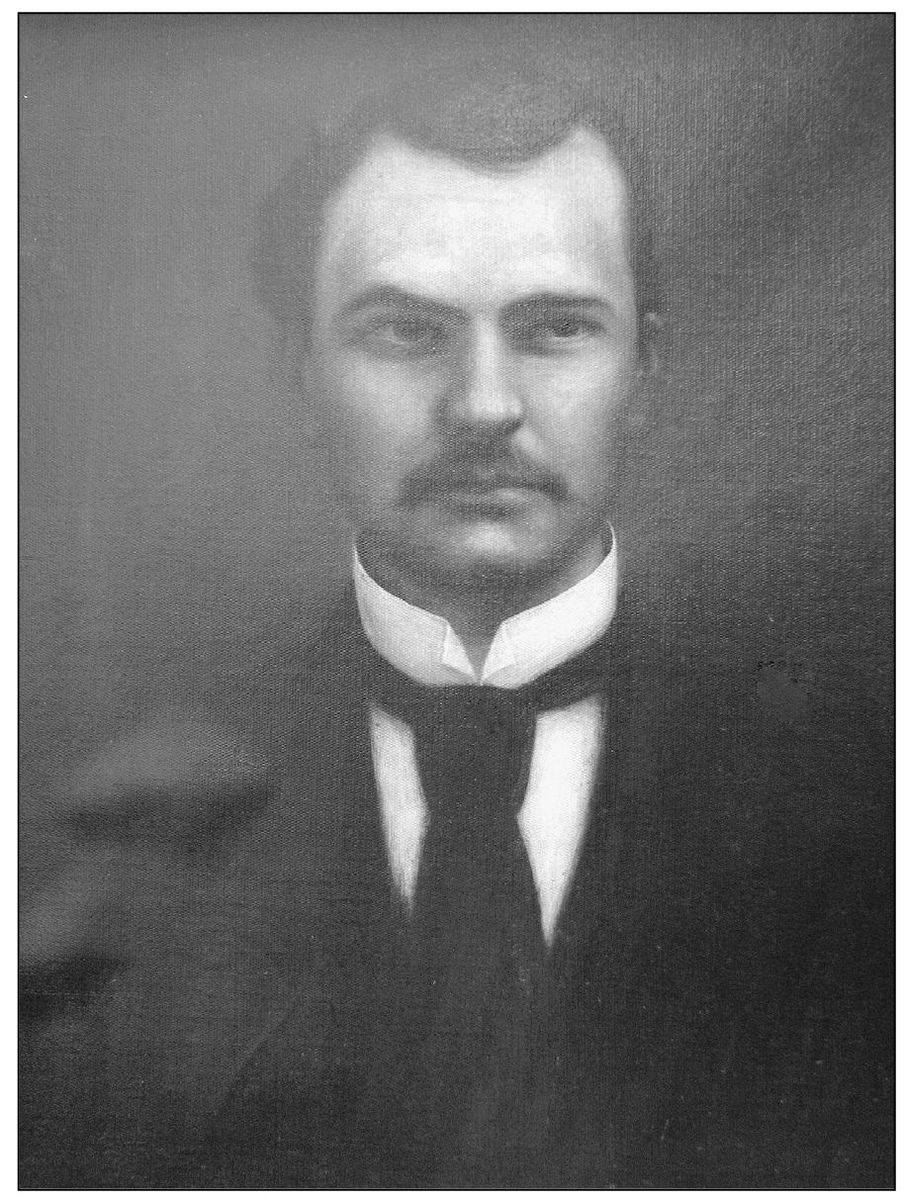
John Cook was an East Washington Street merchant. After one term as Fifth Ward councilman and five years as city election judge, he was elected mayor. Cook served two 2-year terms as mayor, from 1860 to 1862 and again from 1864 to 1866. He was not involved in any official interaction with Confederate commanders when Hagerstown was ransomed in July 1864. Many elected officials in the region fled north when the Confederates approached in the mistaken fear that they would be made hostages. Lower ranking city officials dealt with the Confederate demands. (City of Hagerstown.)
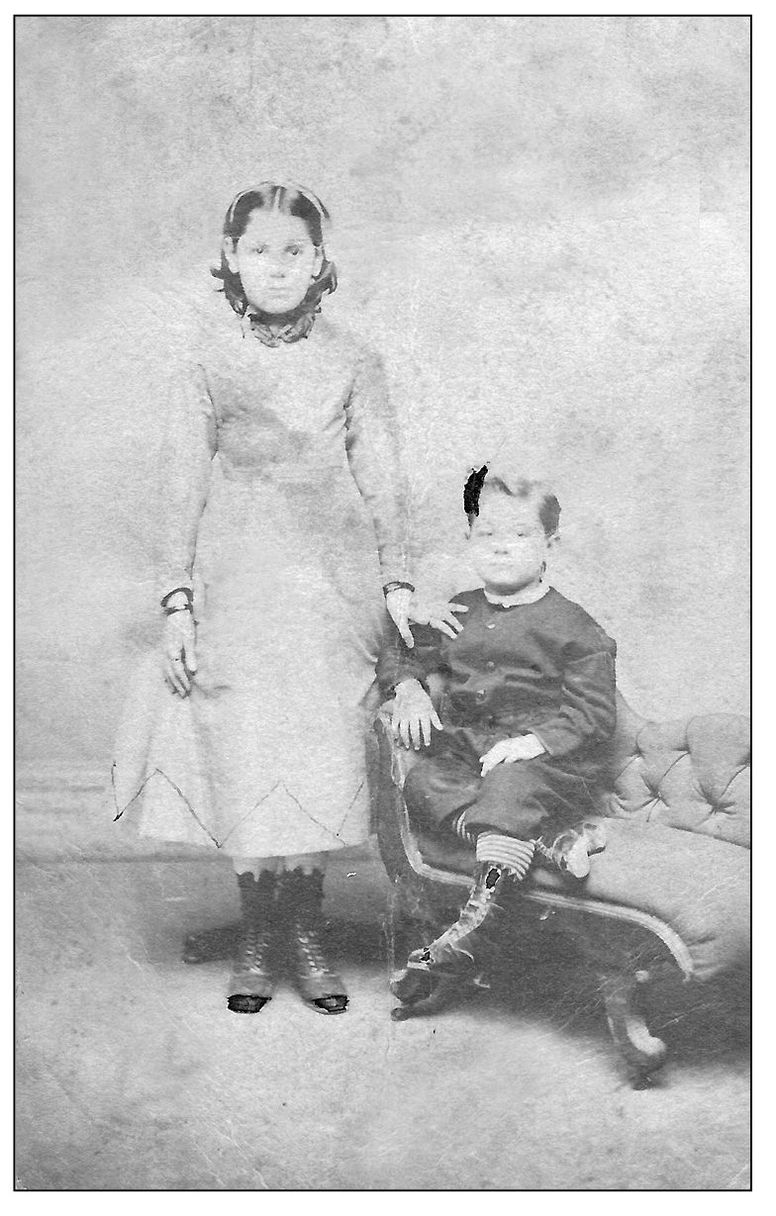
Mayor Cook fathered a large family. Taken about 1869 by local photographer Elias Recher, this carte de visite shows his daughter Cora Bell Cook, age 10, and son Frank Ephraim Cook, age 4. A family member wrote on the back “awful photo.” (Cynthia Blackstock.)
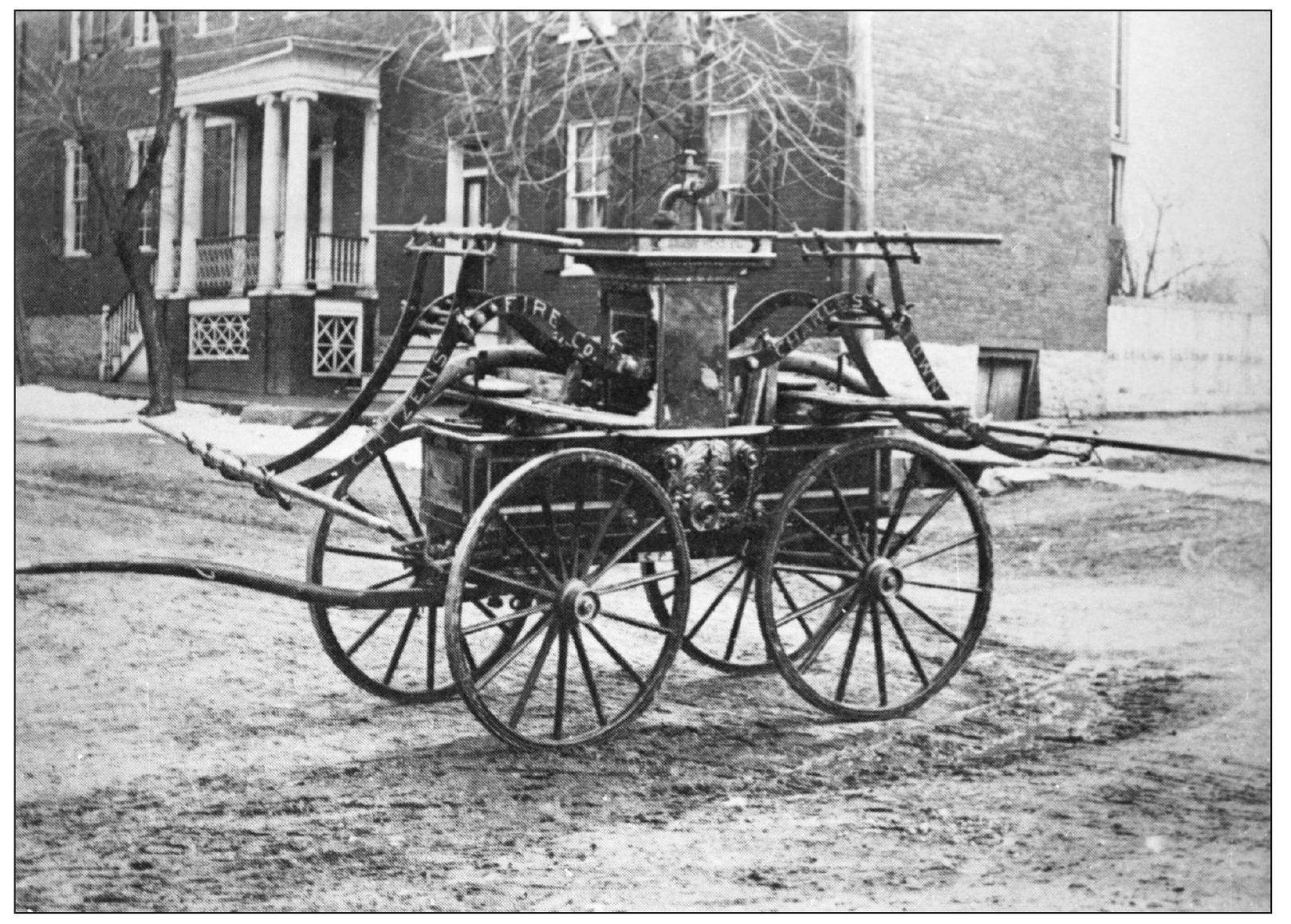
Hagerstown had three fire companies during the Civil War. First Hose Company’s 1853 apparatus is shown in the streets of Charles Town, West Virginia, where it was sold to Citizen’s Fire Company. Barely visible is “First Hose Co.” on the pump tower. (Bill Theriault.)
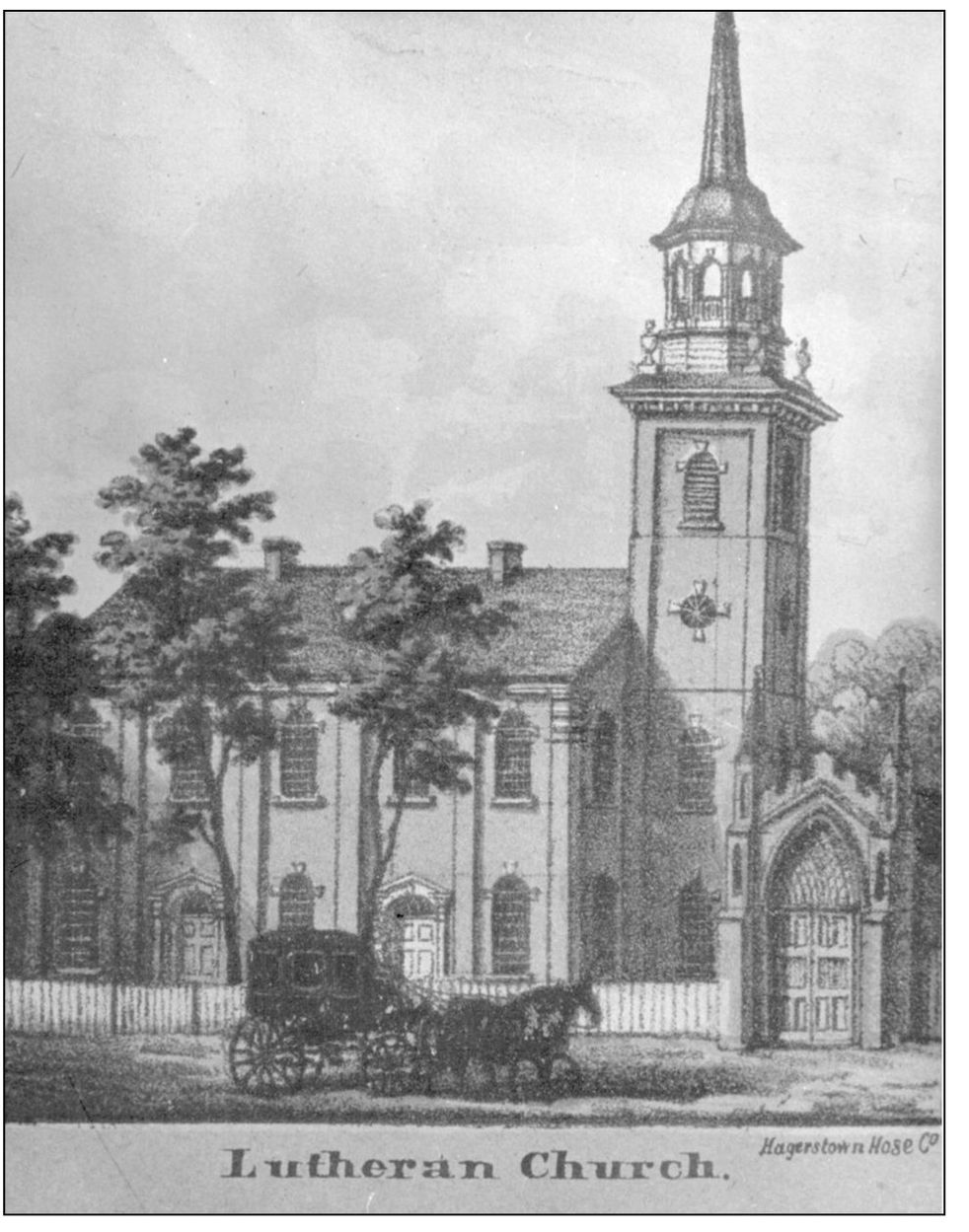
Before and during the war, the First Hose Company occupied the ornate shed at the front of St. John’s Lutheran Church. In the 1880s, they moved to a new facility one block north on South Potomac Street. (City of Hagerstown.)
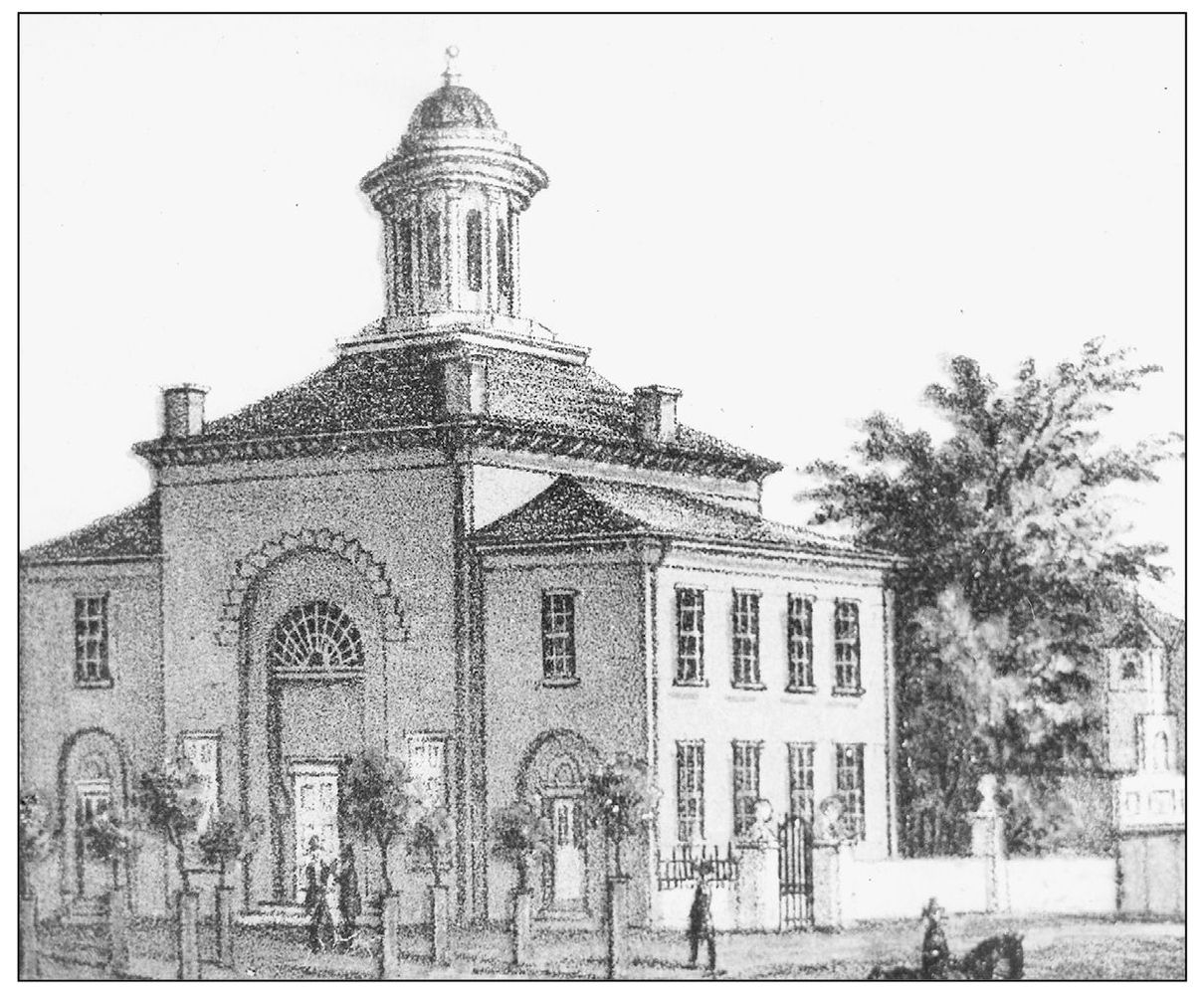
Antietam Fire Company (Company 2) was housed in a building located on South Jonathan Street (Summit Avenue) directly behind the circuit courthouse. It appears at the right in this drawing. The courthouse was used as an army hospital in 1862 and 1863. Burned in 1871, the courthouse was replaced with the current building soon thereafter. (City of Hagerstown.)
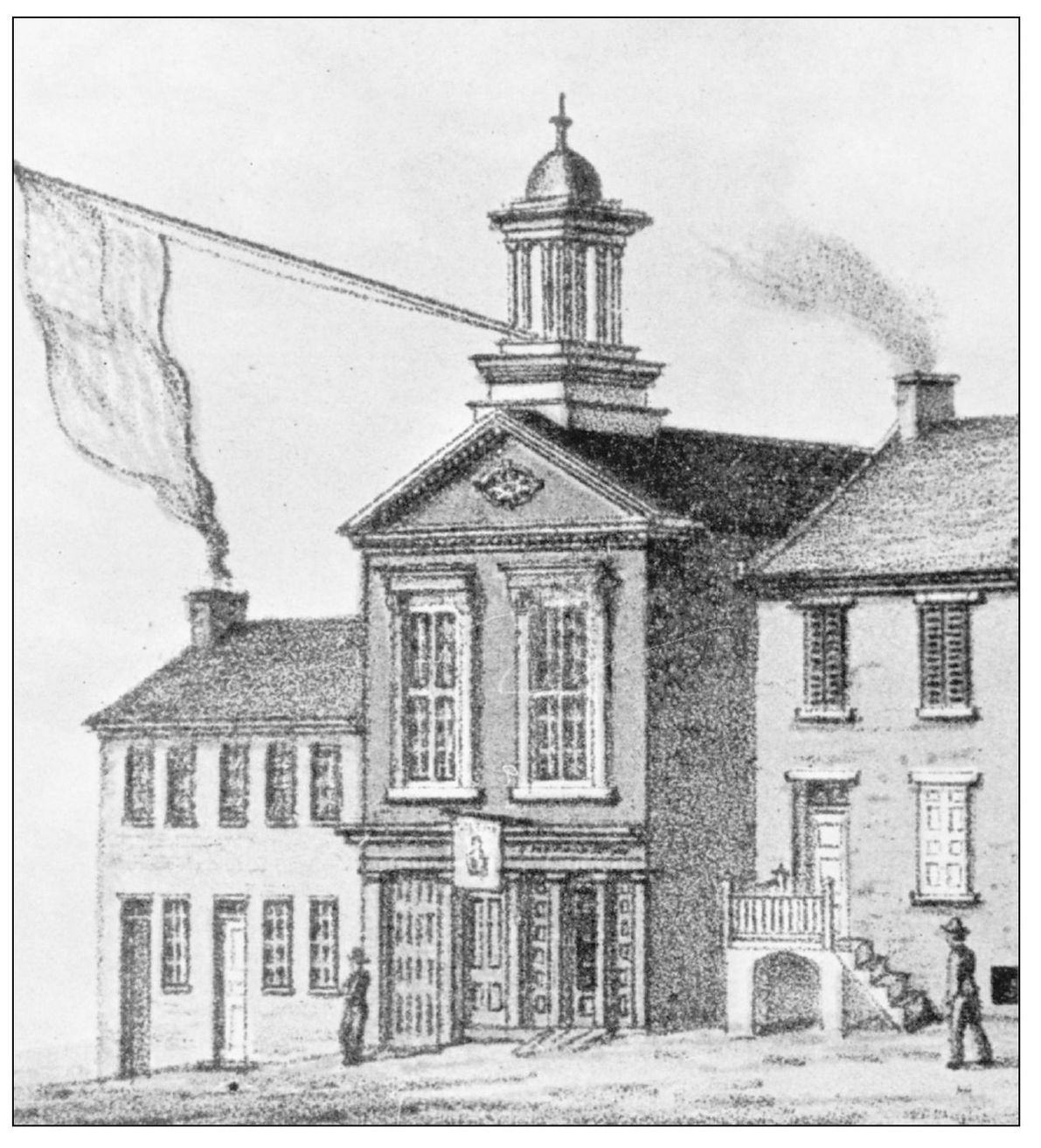
The Independent Junior Fire Company (Company 3), a spin-off of the First Hose Company, constructed a firehouse on the west side of North Potomac Street in 1852. The building was used for various military purposes during the war. Structurally unsound, the building was demolished and a new edifice built in its place in the 1880s that survives to this day. The “Juniors” moved from this site to a new station on Eastern Boulevard in 1992. (City of Hagerstown.)
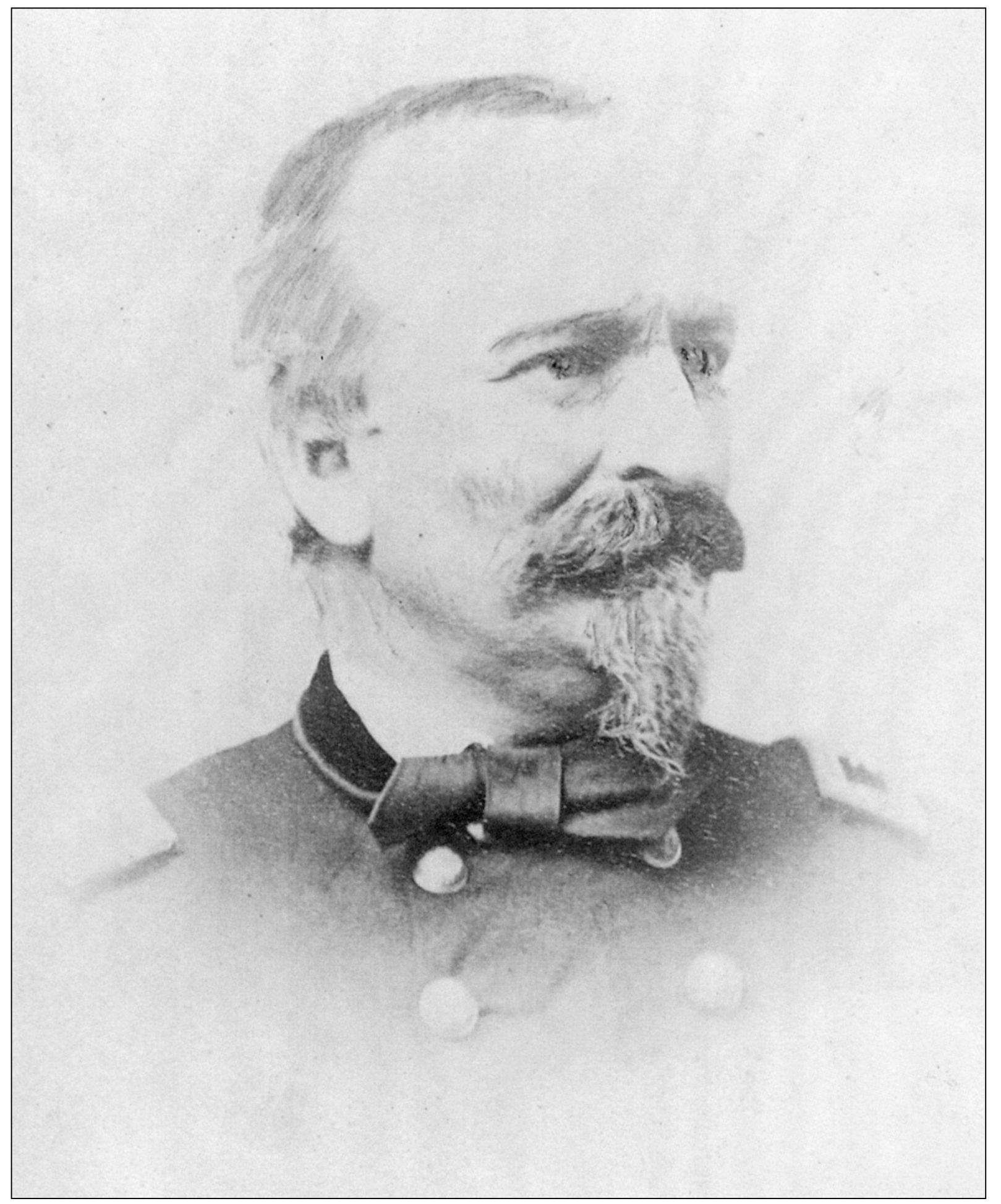
George Bell was the son of the editor of the Hagerstown Torchlight newspaper. He was appointed to the U.S. Military Academy at West Point by congressman James Dixon Roman and graduated in 1853. Bell distinguished himself in 1861 as a courier of secret dispatches for Gen. Winfield Scott. Transferred to the commissary department, he progressed through increasingly responsible posts until he was overseeing the purchase and distribution of food for tens of thousands of troops every day. Bell received a brevet (honorary) promotion to brigadier general in 1865 and retired with the rank of colonel in 1892. His younger brother Henry C. Bell served in the Confederate army as a trooper in Company C, 1st Maryland Cavalry. (USAMHI.)
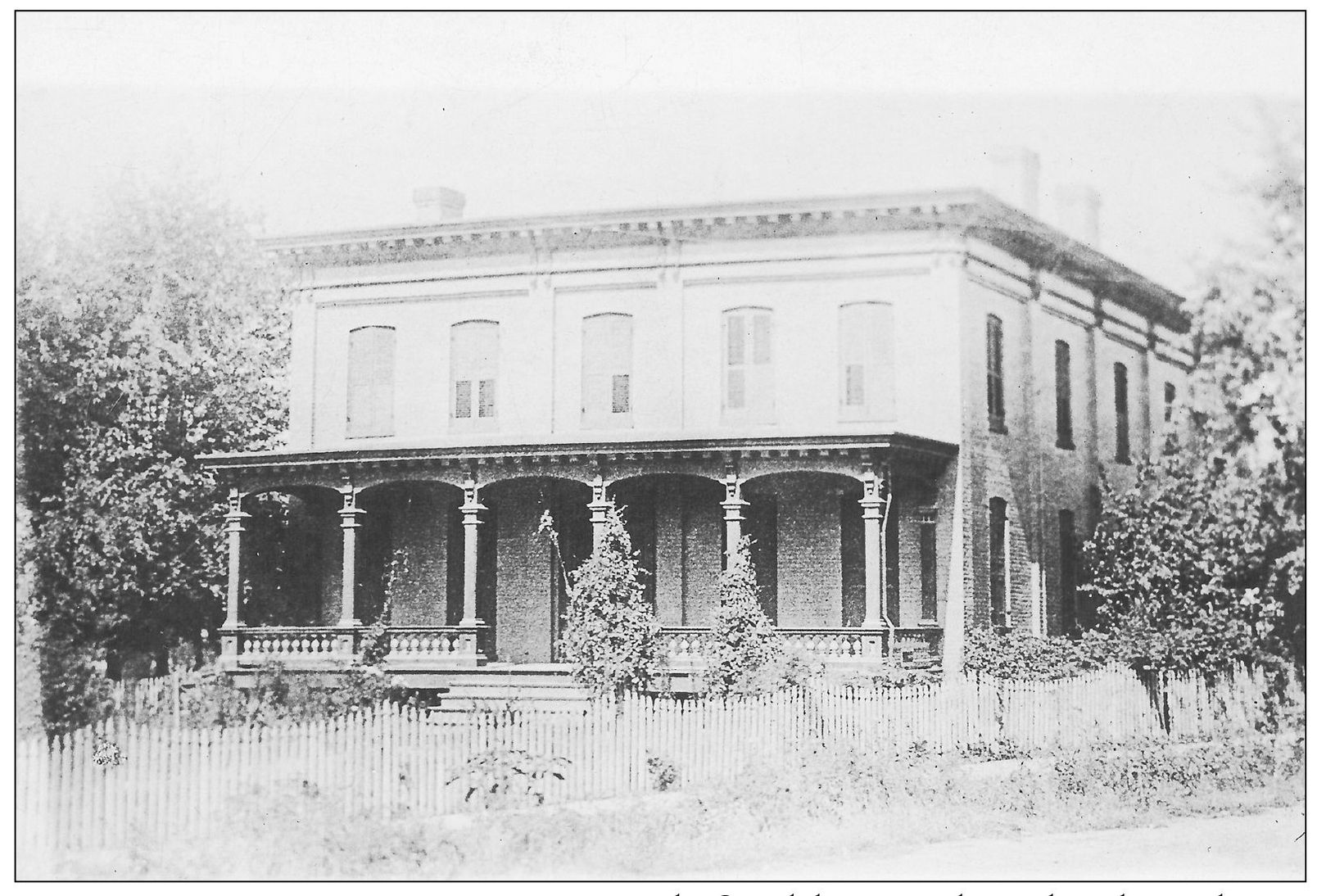
The Straub home was located on the south side of Washington Avenue and on the west side of Washington Square. The residence was a local landmark during the Civil War era. Soon thereafter, the site was purchased, the house razed, and the first building of St. Mark’s Lutheran Church was constructed. The current structure in the western quadrant of Washington Square is the second church building on the site. (WCHS.)
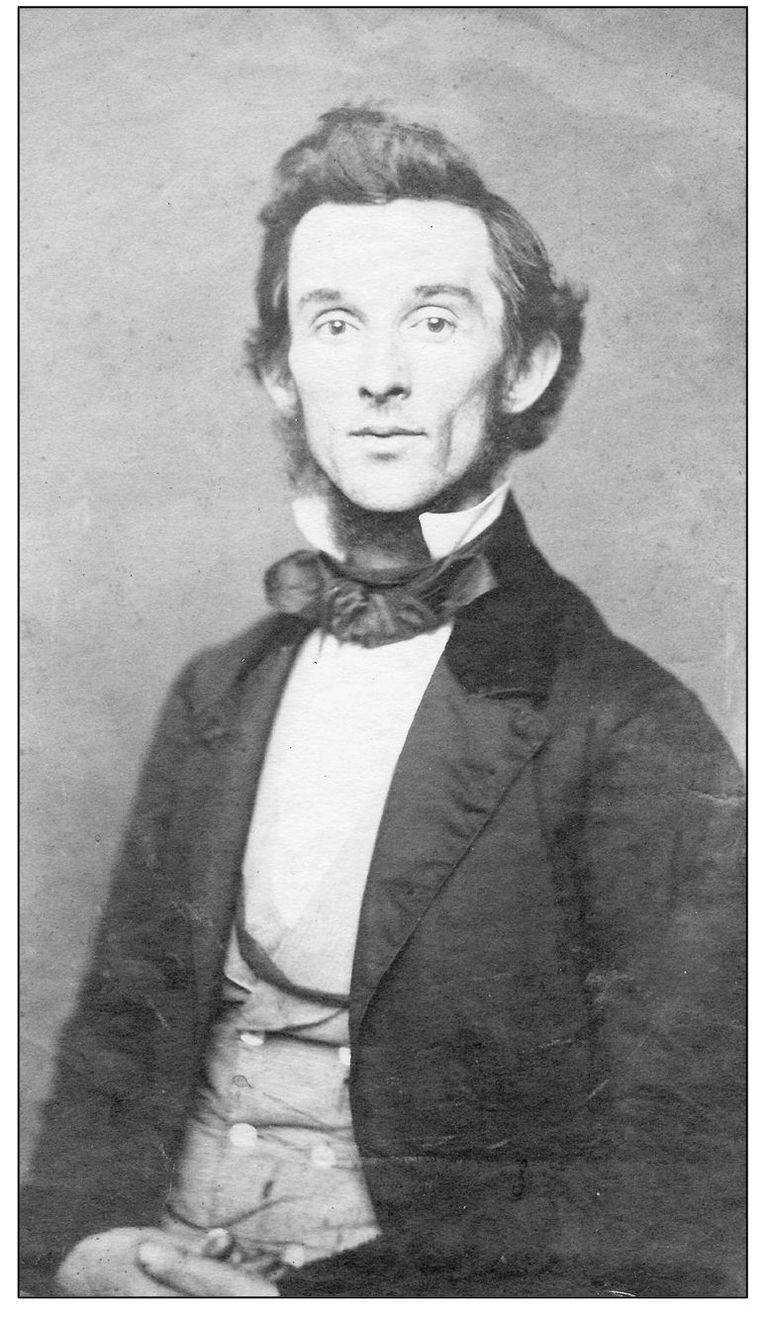
As a young man, Elias Recher became fascinated with the photographic process developed by Louis Daguerre in the 1830s. As early as 1855, Recher established a studio near Public Square, which flourished for many years. He later expanded his portrait business to include mass-produced stereographs of regional scenery, most notably the Antietam battlefield and Pen Mar Park. Many of the portraits and postwar stereographs included throughout this book are his work. (WCHS.)